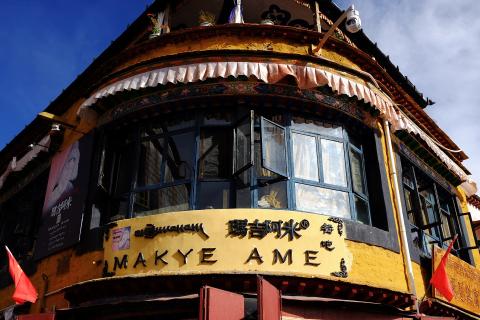
DAY6 Wandering from Majiami to Canggu Temple
The dazzling light shone into the room from the gap in the curtains, making me realize that I was still lying on the bed of a hotel in Lhasa, and my daughter was still sleeping soundly. I quietly got up and went to the Jokhang Temple again. I didn't bring a camera or a mobile phone. I just sat quietly at the entrance of the Jokhang Temple and watched the herdsmen kowtow. If they kowtow 500 long heads every morning and evening at the entrance of the Jokhang Temple, they will have to kowtow continuously for 200 days to reach 100,000 long heads, which is about the same time as it takes to kowtow all the way from Tibetan areas to the Jokhang Temple. The only driving force is spiritual power, and faith has become an indispensable part of their lives.
When I returned to the hotel and woke up my daughter, it was already past 10 o'clock. Breakfast was too late and lunch was too early. I remembered that Maggi Ami’s Restaurant only had a minimum purchase before 12 noon, so I went straight to Maggi Ami with my daughter. Anyway, today’s plan was to rest.
Makye Ame is located at the southeast corner of Barkhor Street. It is the earliest restaurant bar in Lhasa that mainly serves Nepali, Indian and Tibetan food. Majiami means "unmarried mother" in Tibetan. The name Magi Ami comes from the love poems of the sixth Dalai Lama Tsangyang Gyatso, and it is said to be the name of Tsangyang Gyatso’s lover. The place where Tsangyang Gyatso and Magyami had a tryst was the khaki-colored small building where Magyami lived.
The restaurant has a strong Tibetan style. There are many guestbooks on the coffee table, filled with the feelings of tourists from all over the world. Some tourists even write their confessions to their lovers after the guestbook is used up. The messages were written on a napkin and the restaurant published a collection of them. The platform on the roof of Maggie Ami is an excellent location overlooking Barkhor Street. I like to stay here to bask in the sun and watch the people coming and going on Barkhor Street.
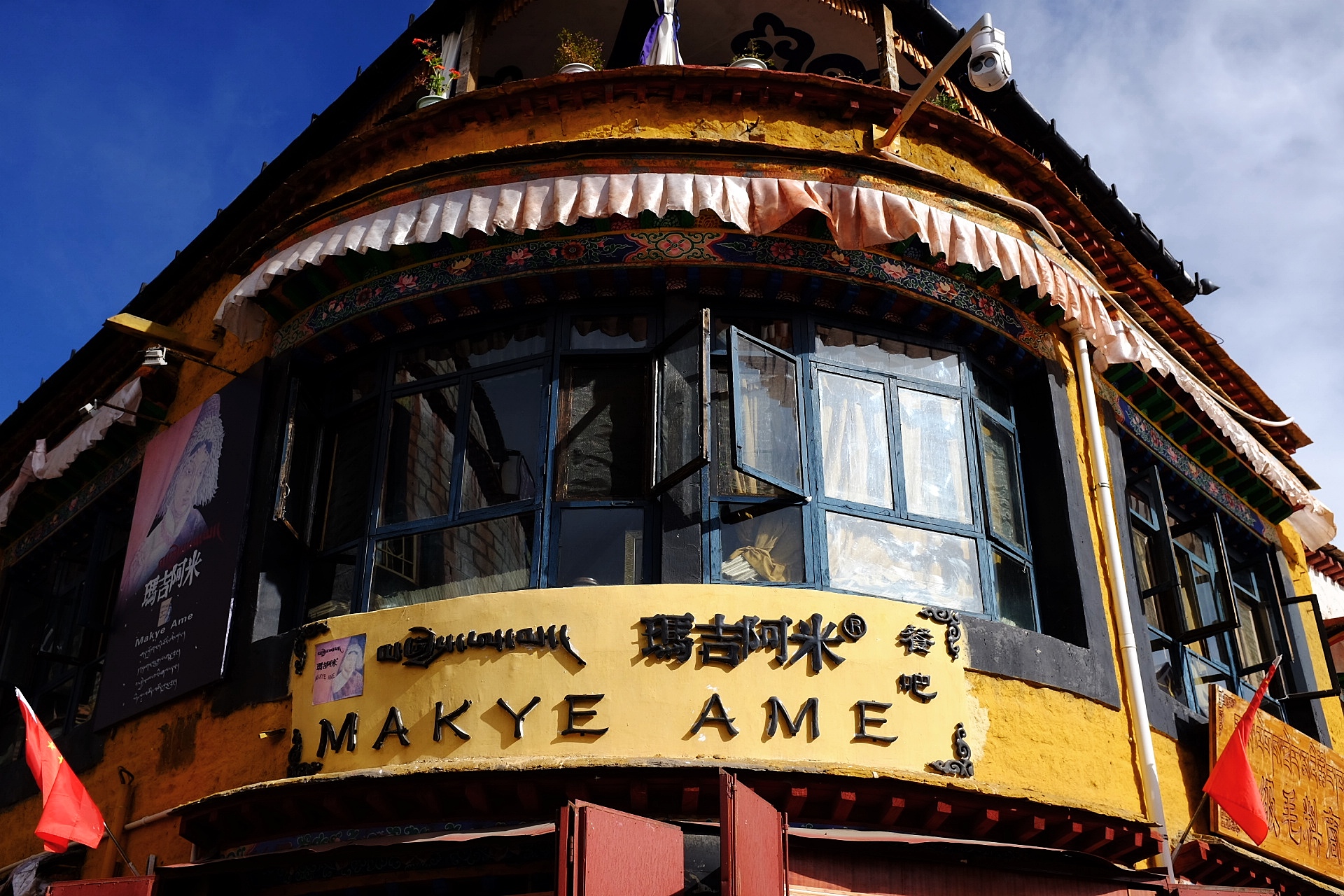
When we arrived at Magi Ami, there were still many people waiting in line. Many tourists took photos with Ajia in the store. She always smiled and agreed. I was more interested in the turquoise around her neck. Maybe There are many stories, but I’m just too busy to find out.
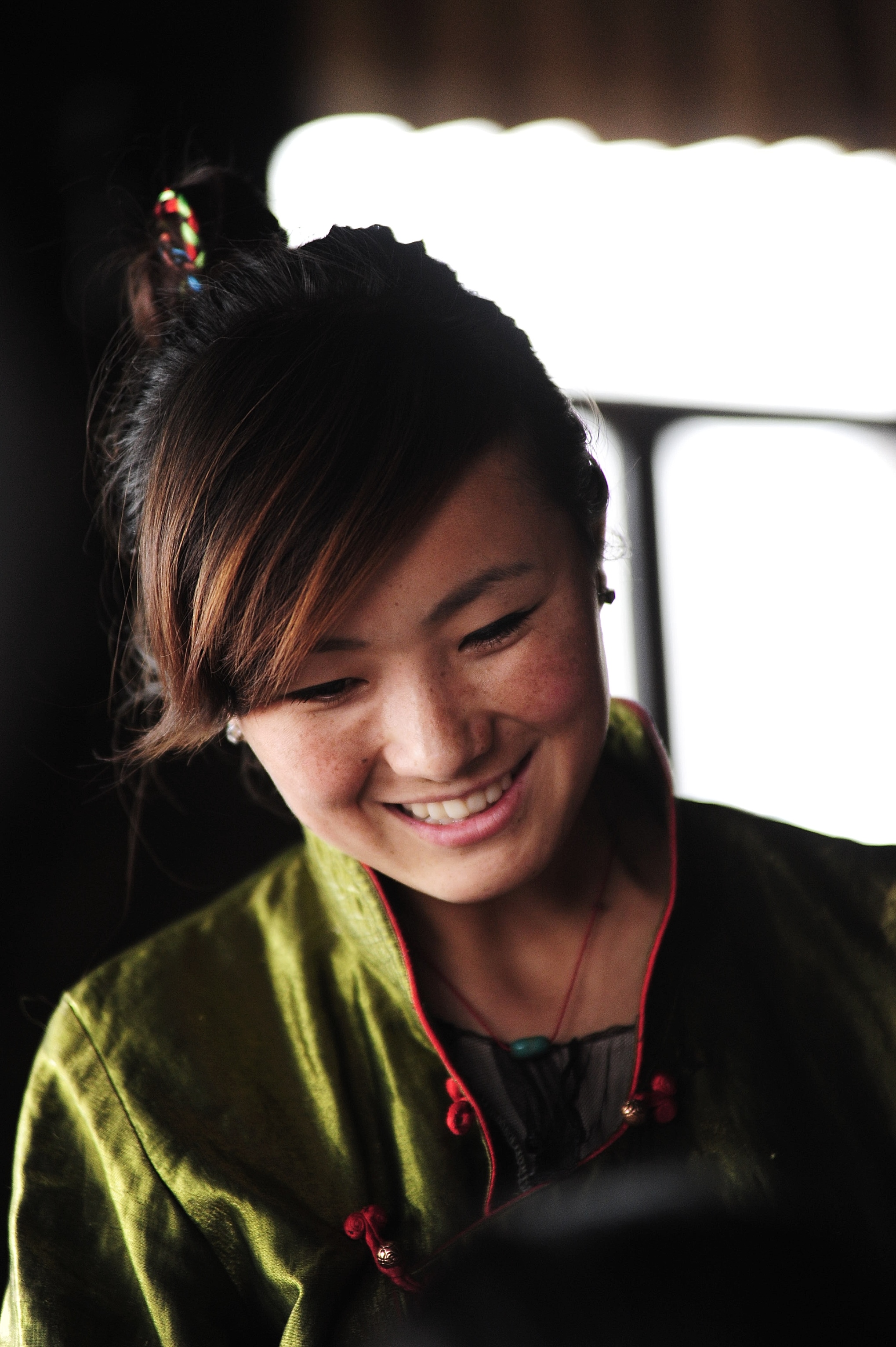
Maggie Ami's shop was full of tourists, it was 10:30 in the morning.
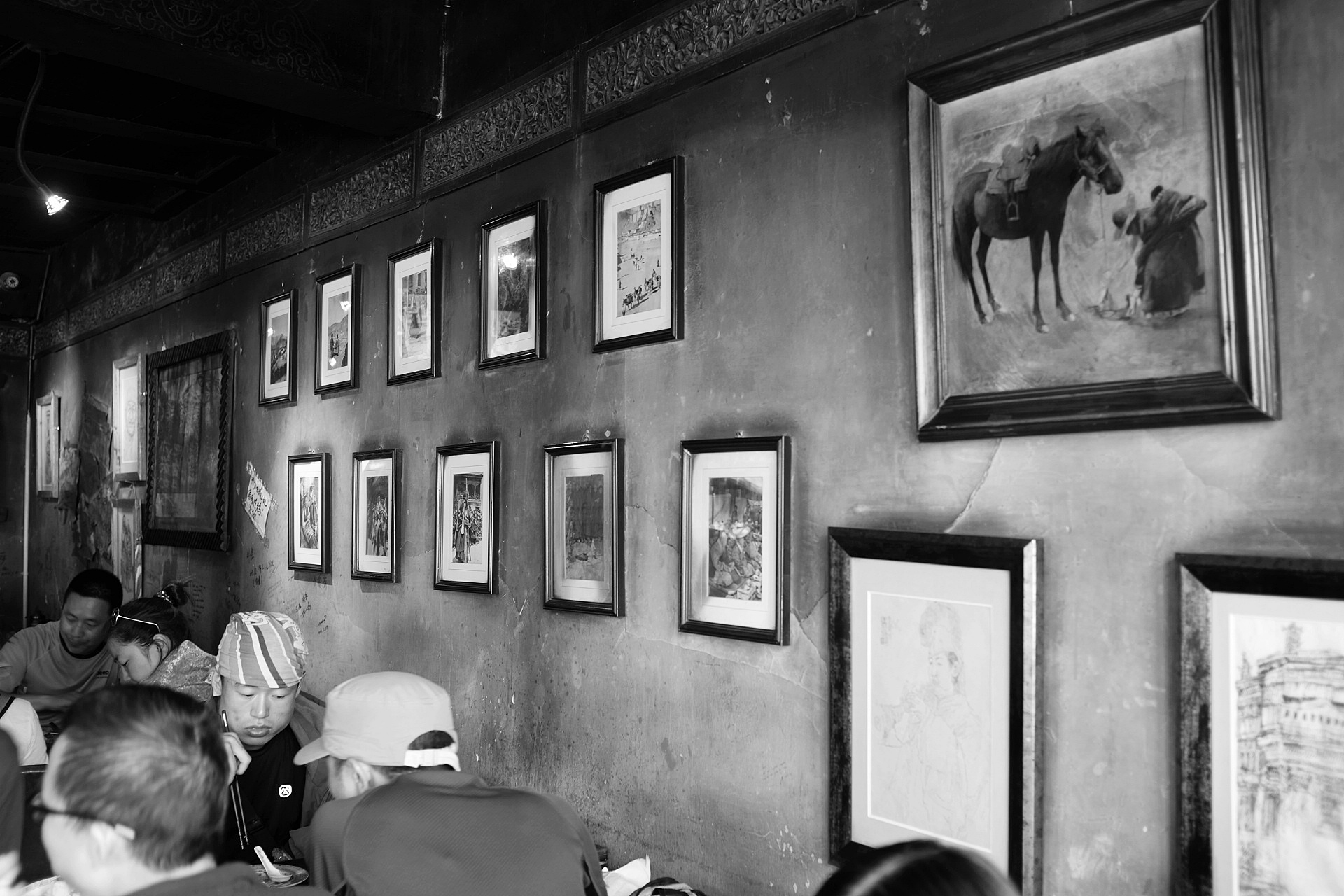
The walls are decorated with various Tibetan living utensils.
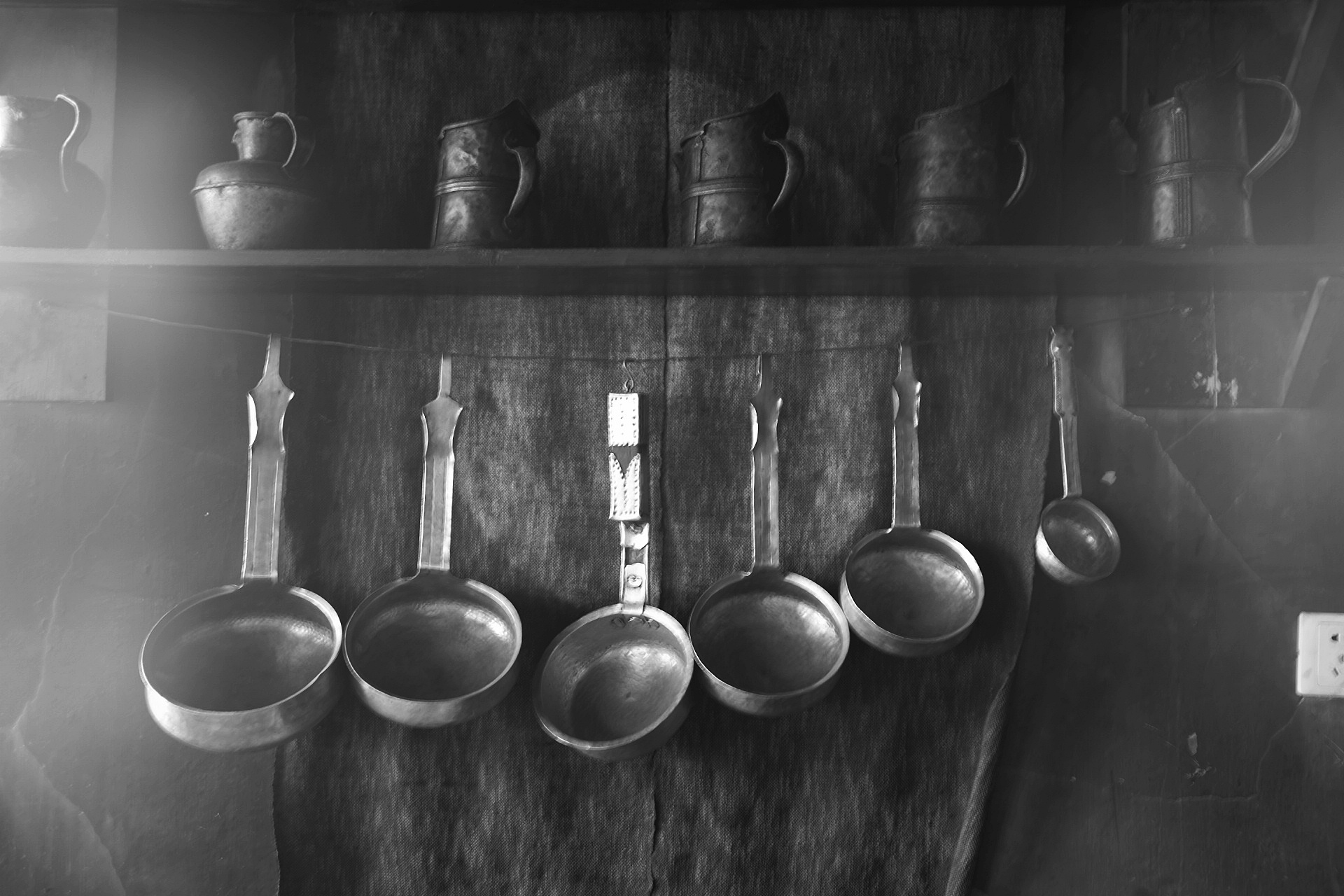
The bookshelf in the middle and the surrounding window sills are filled with guest books from tourists. These guest books are all handmade with Tibetan paper and classified according to the region and city where the tourists come from. Many people write and many people read.
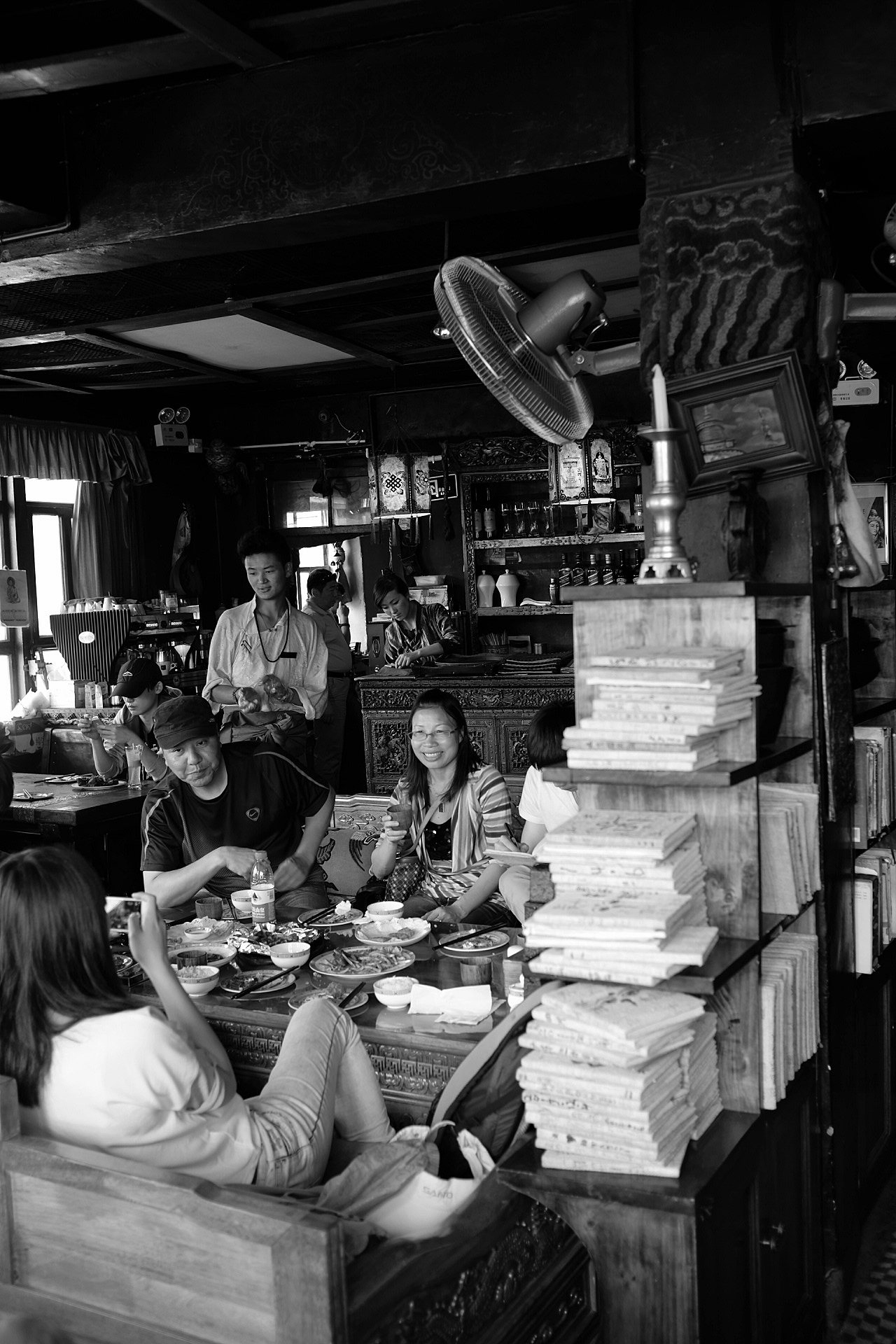
My daughter said: Just pretend to be B! We ordered curry beef and mutton with rice, but it didn't arrive for a long time. We just sat down for a while and didn't rush. After my persuasion, my daughter reluctantly pretended to be B for a while.
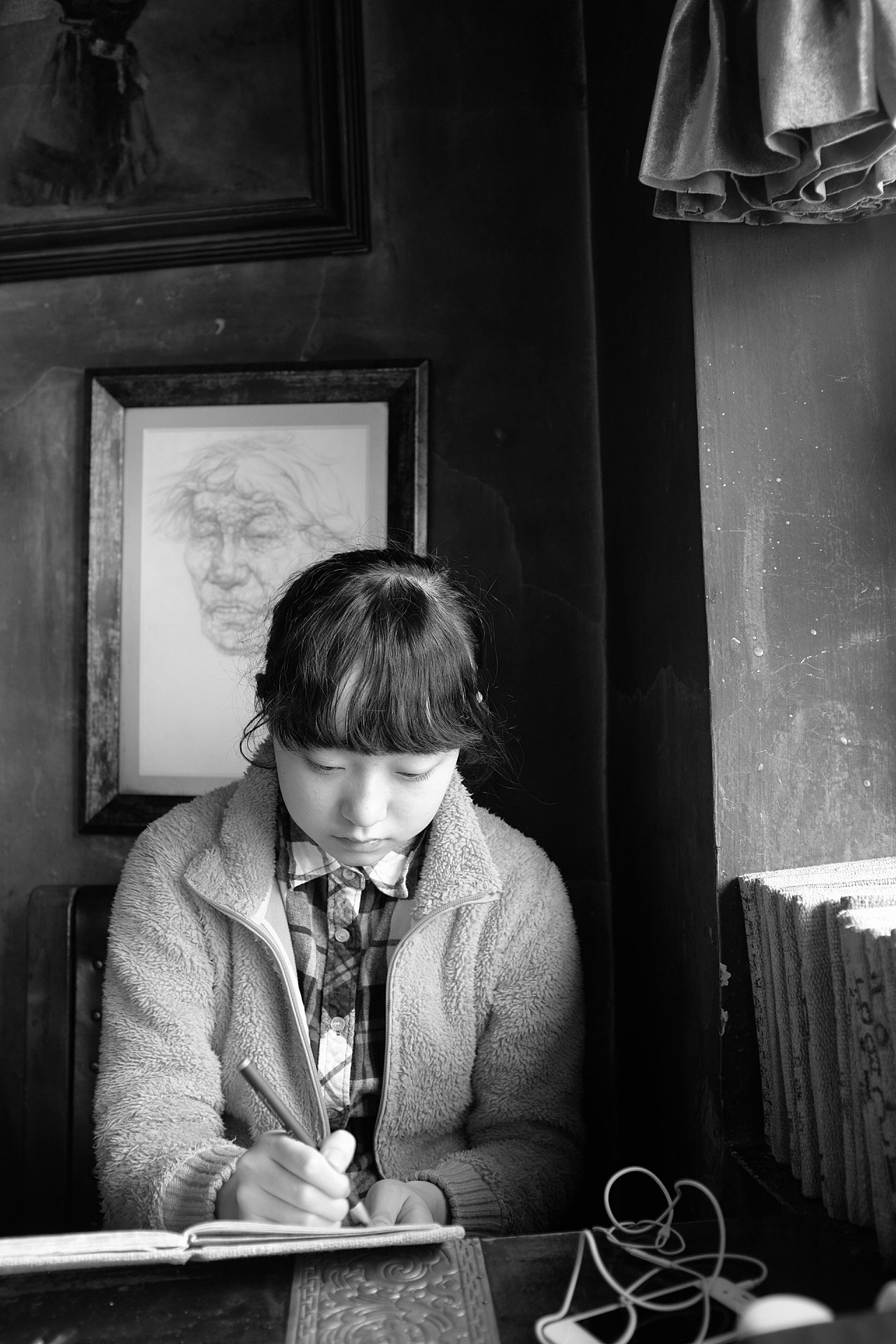
She drew that bookshelf, and maybe she could find this message again later.
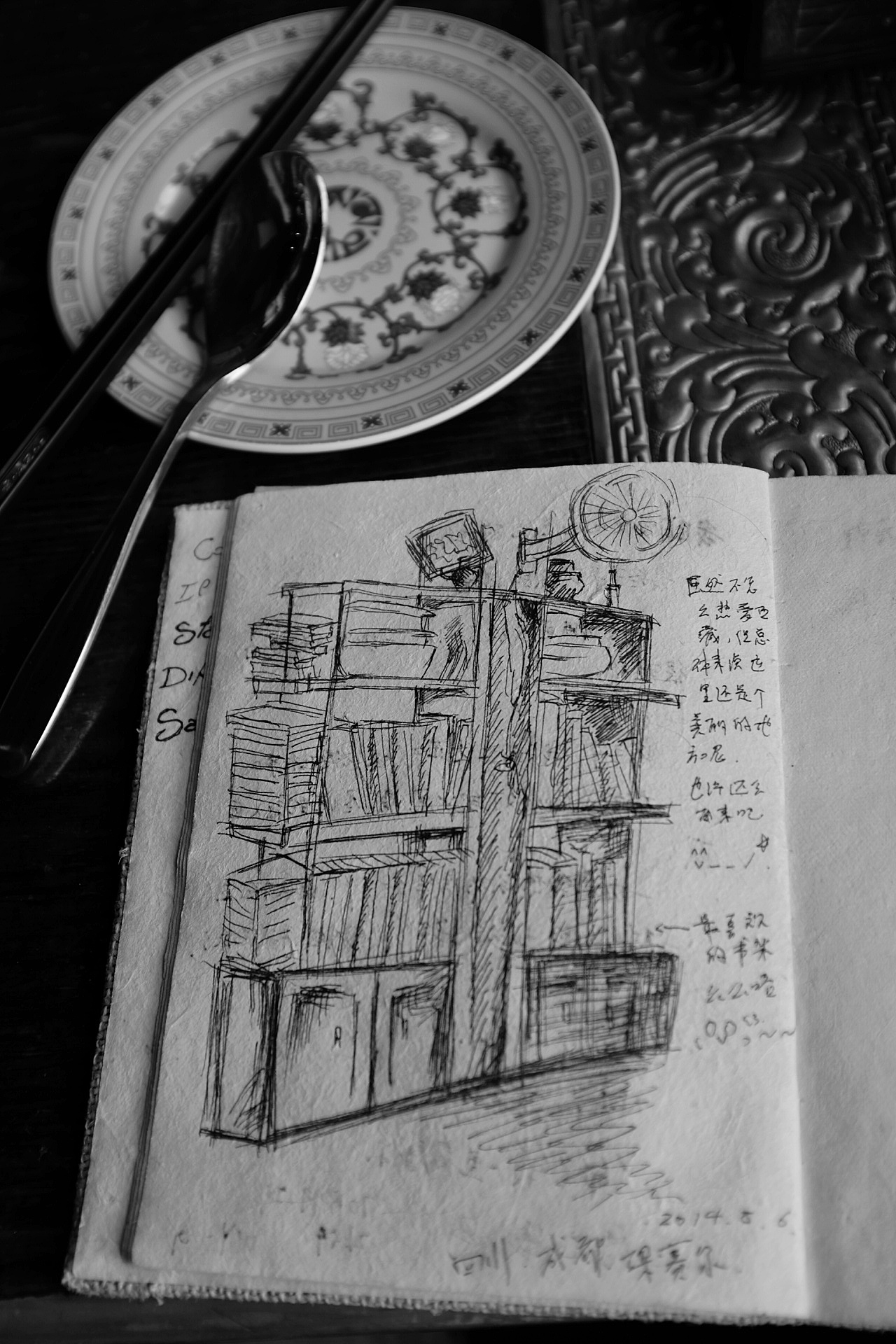
Looking through the window at the kowtowing herdsmen on Barkhor Street, I was in a daze.
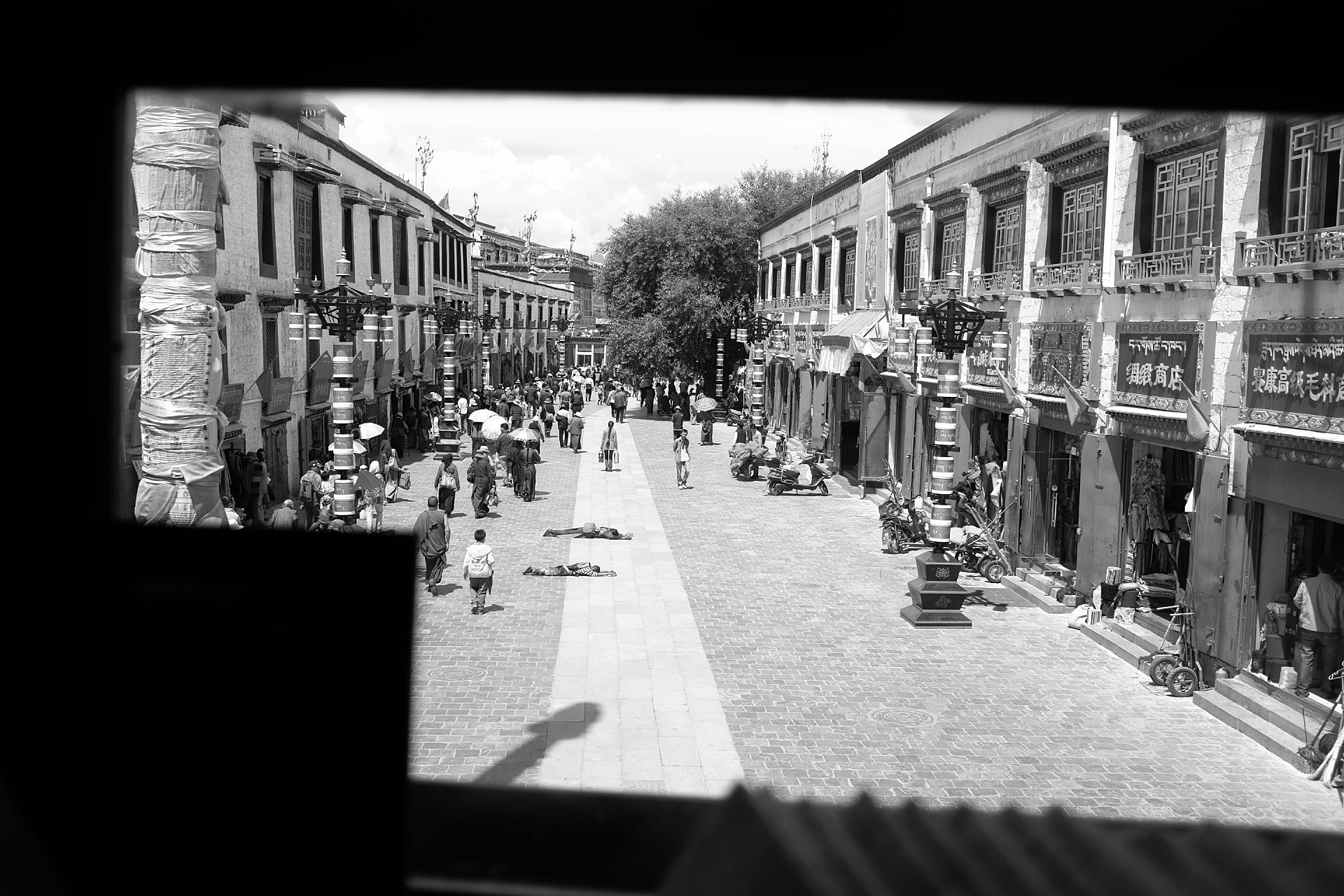
After leaving Majiami, we went to the Jokhang Temple, the only place we wanted to visit today. In the afternoon we spent the afternoon sunbathing on the roof of the Jokhang Temple and looking at the Golden Dome and the Potala Palace.
The Jokhang Temple is the center of Tibetan Buddhism. It is said that when Songtsan Gampo married Princess Wencheng of the Tang Dynasty and Princess Chizun of India, Princess Wencheng brought a 12-year-old life-size Buddha statue of Sakyamuni, and Princess Chizun brought an 8-year-old life-size statue of Sakyamuni. These two Buddha statues built Jokhang Temple and Ramoche Temple respectively. There are many stories in Tibetan history books about the god alpaca stone filling the lake and Princess Wencheng suppressing the demon, as well as the legend of swapping two Buddha statues, but historians are not unanimous in their opinions. In any case, it is an indisputable fact that the Tibetan people value the 12-year-old life-size Buddha statue of the Tang Dynasty more. Later, Master Tsongkhapa presided over the Dharma Conference at the Jokhang Temple, which established the core position of the Jokhang Temple. The golden vase test of the Dalai Lama's reincarnated soul boy was held here. Tibetan herdsmen and monks also used this place as their spiritual destination.
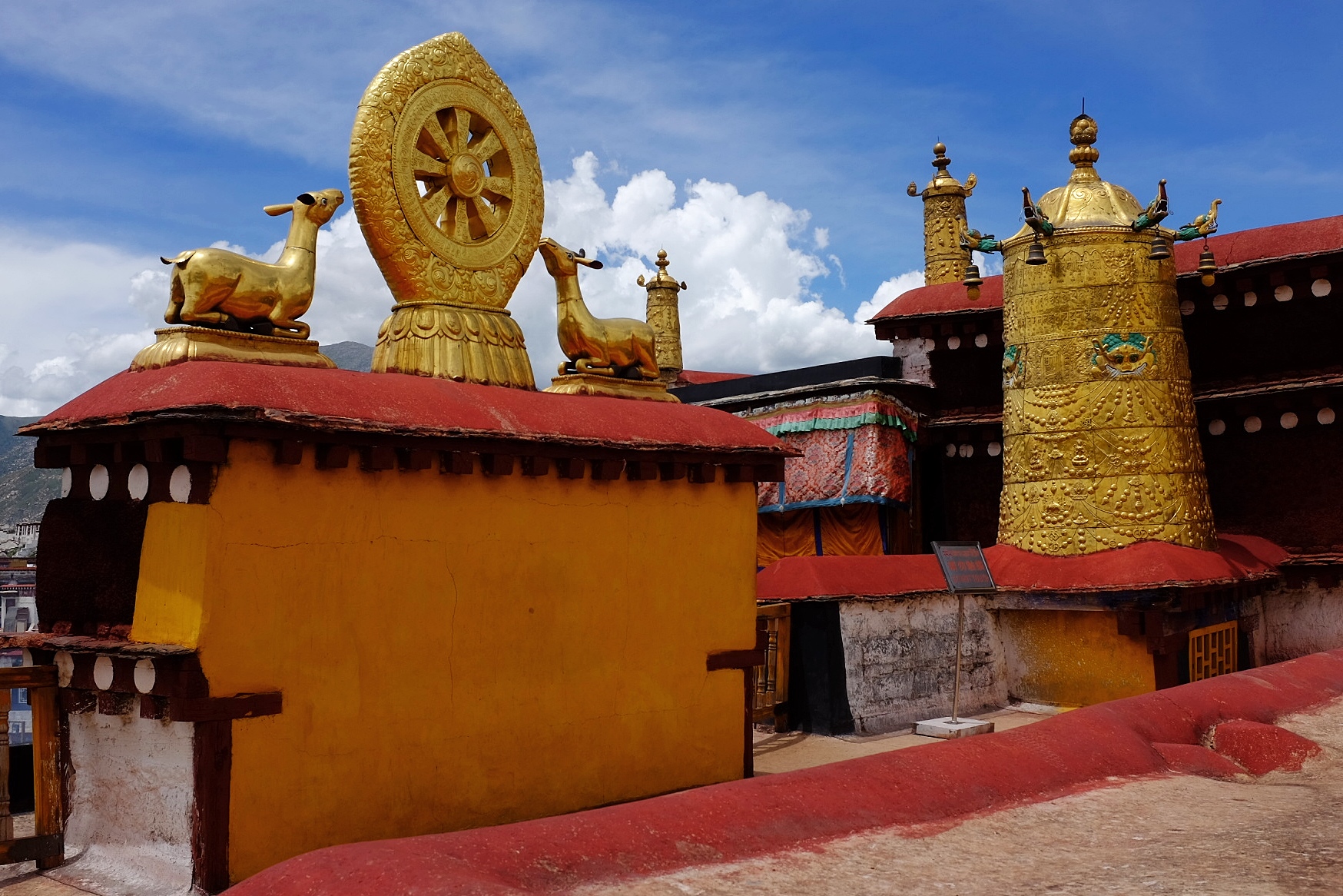
The Jokhang Temple is always crowded with herdsmen coming from all over Tibetan areas to worship. Tourists can visit without queuing, but it is very difficult to squeeze into every Zhacang (Buddhist temple). My daughter and I insisted on watching all the Dracangs, of course the highlight was the 12-year-old life-size Buddha statue, and we quickly went up to the top of the second floor of the Jokhang Temple to get some fresh air. My daughter said: It’s not easy to be a god!
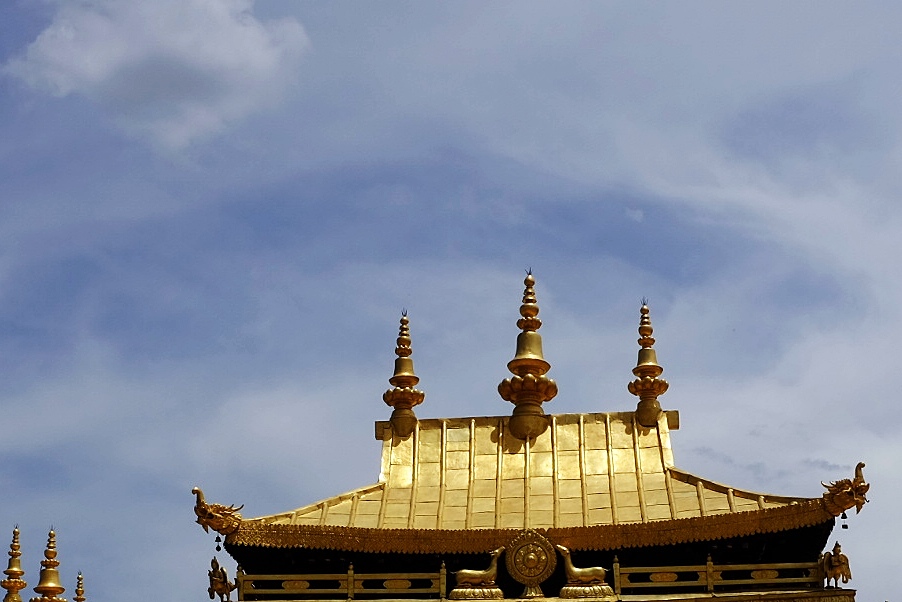
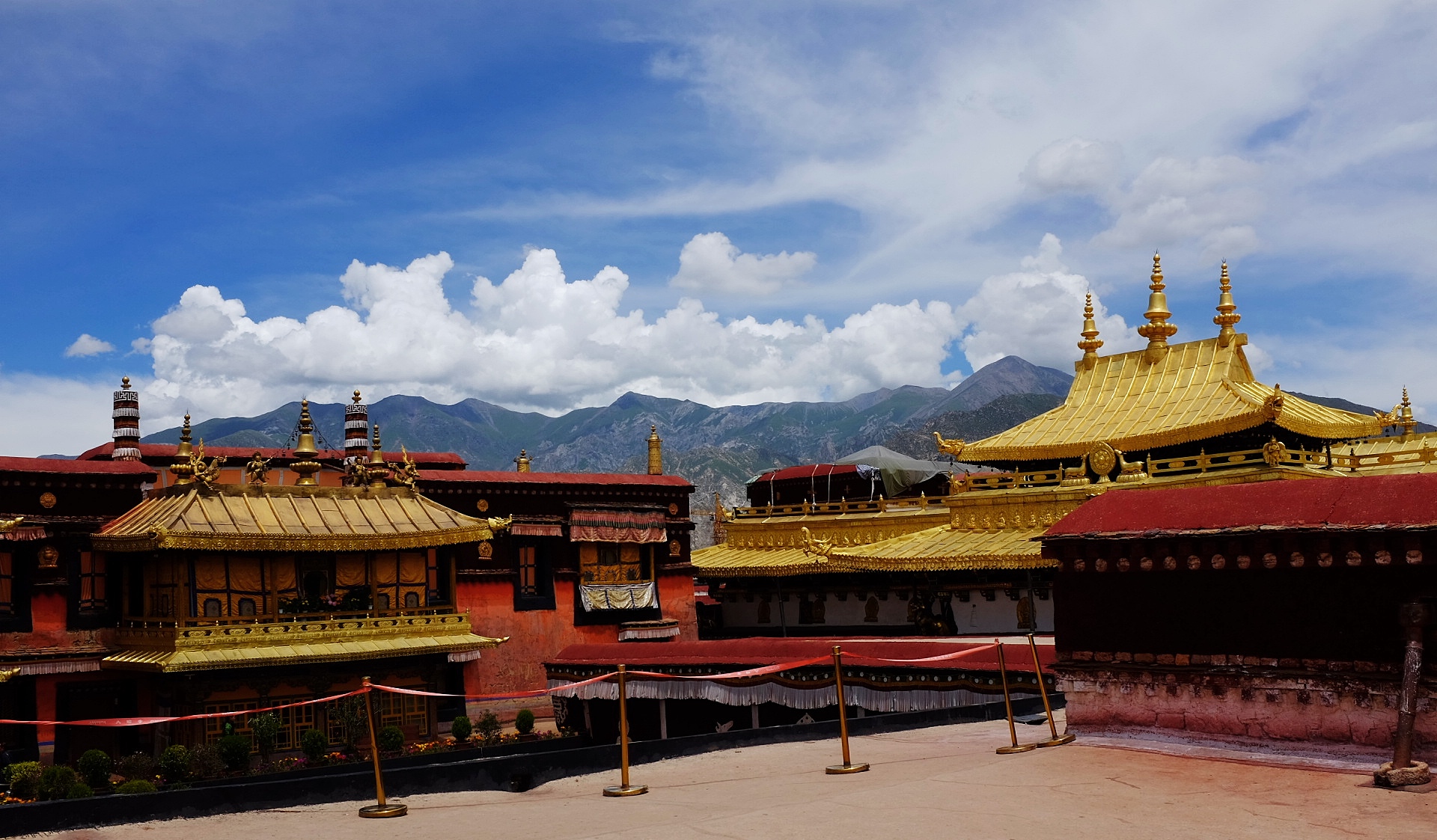
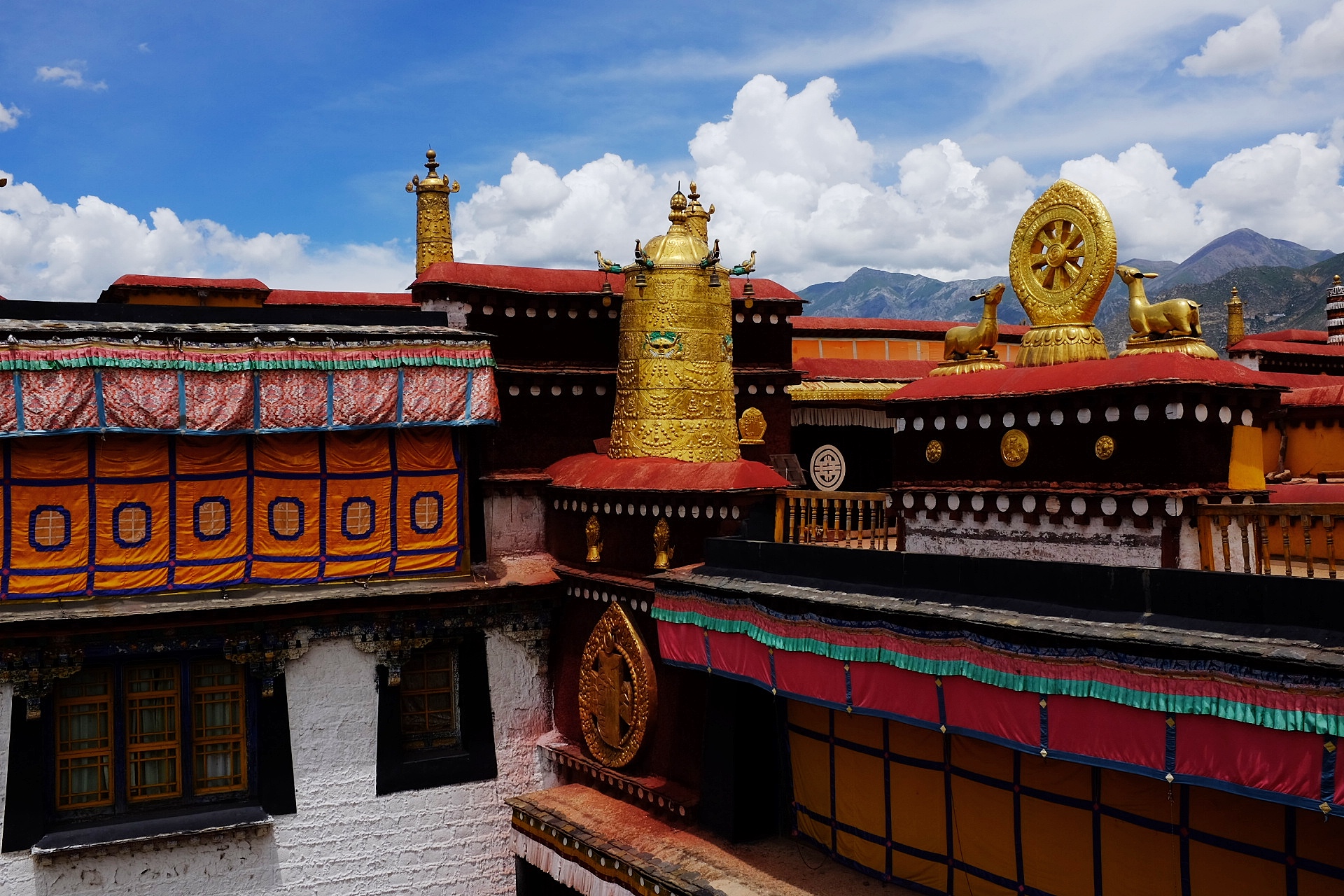
View the Potala Palace from the top of the Jokhang Temple.
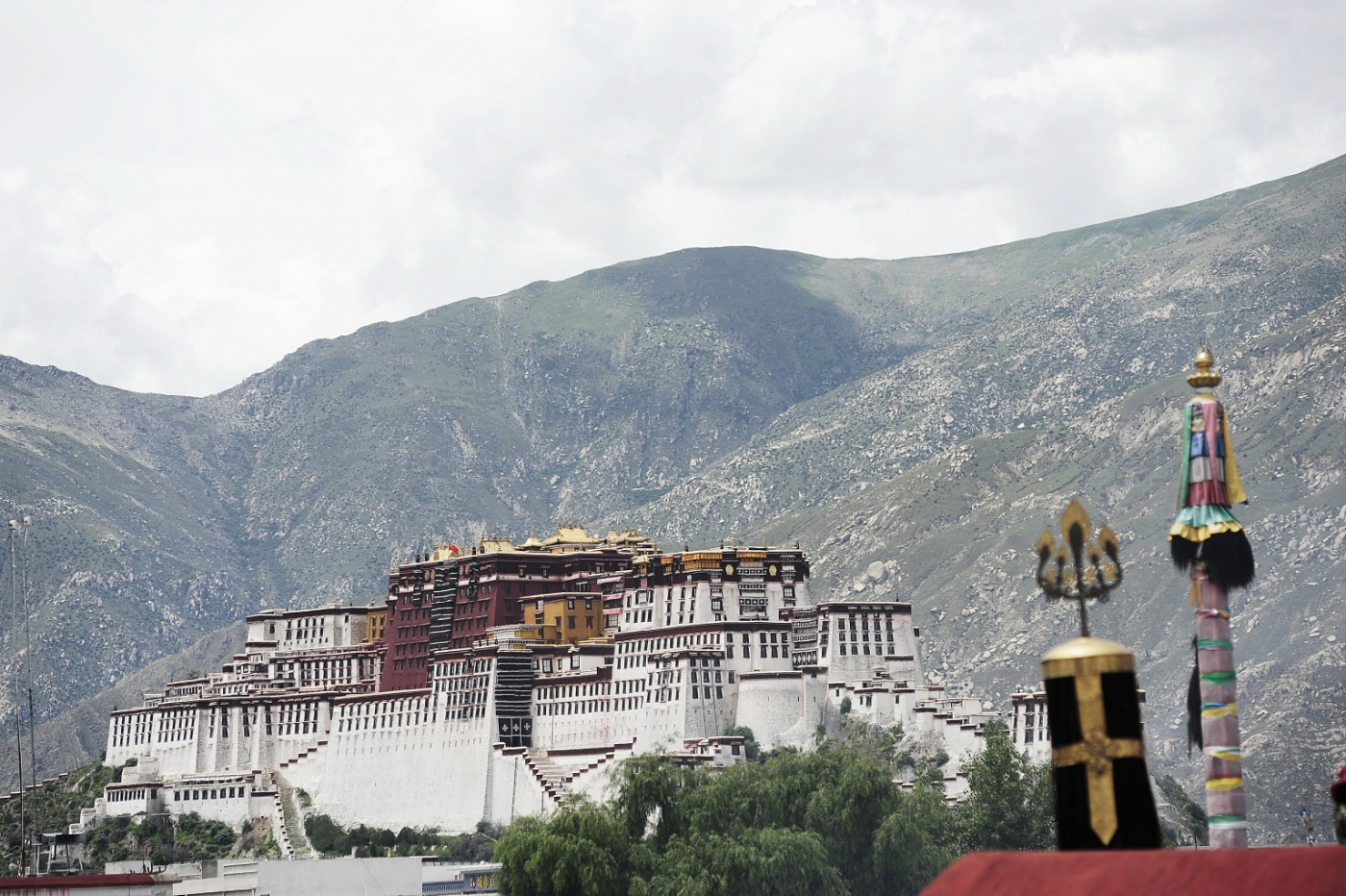
In the afternoon, there were not many herdsmen kowtowing in the South Gate Square, but it was crowded with herdsmen in the morning and evening.
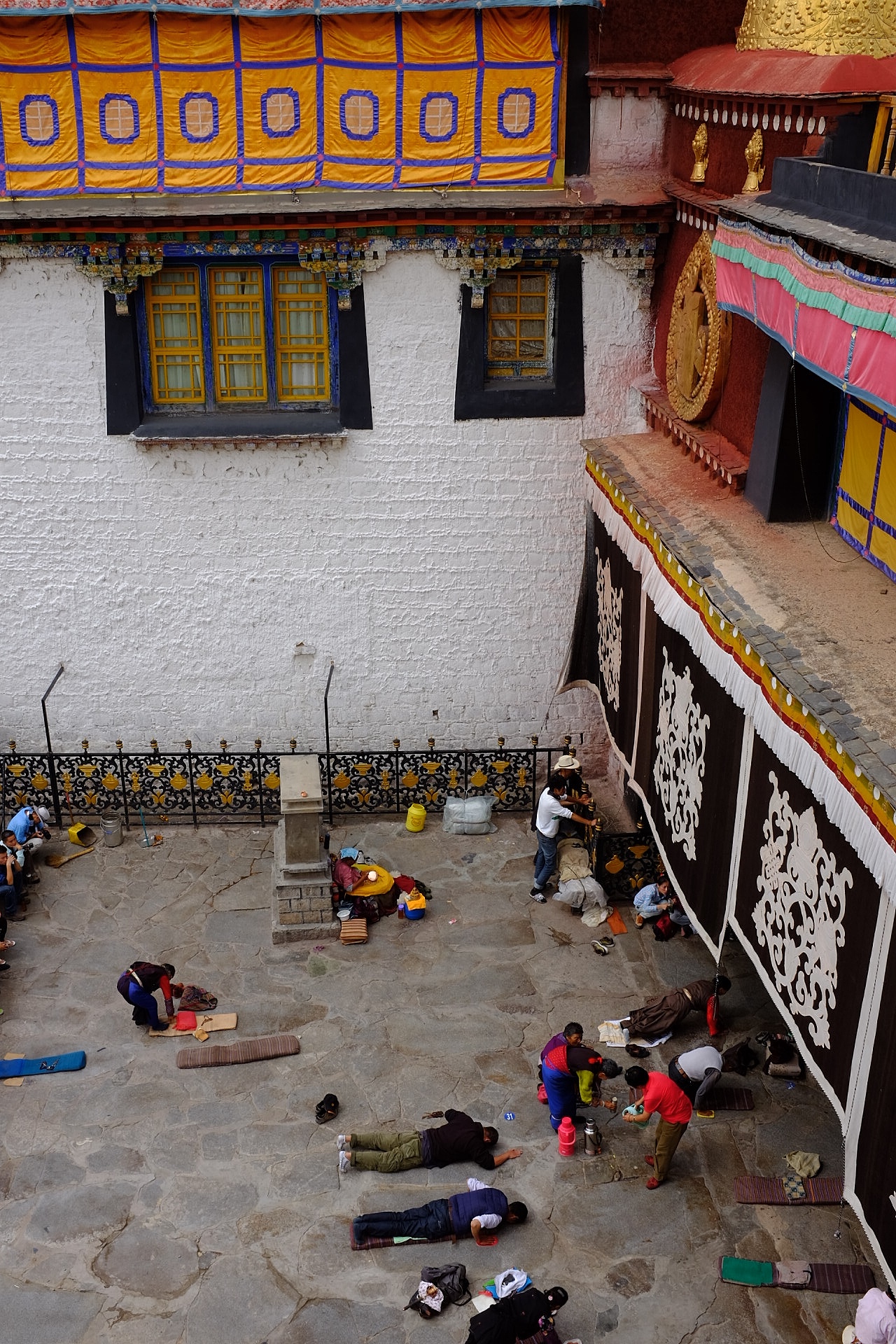
It may be every monk's dream to practice in the Jokhang Temple.
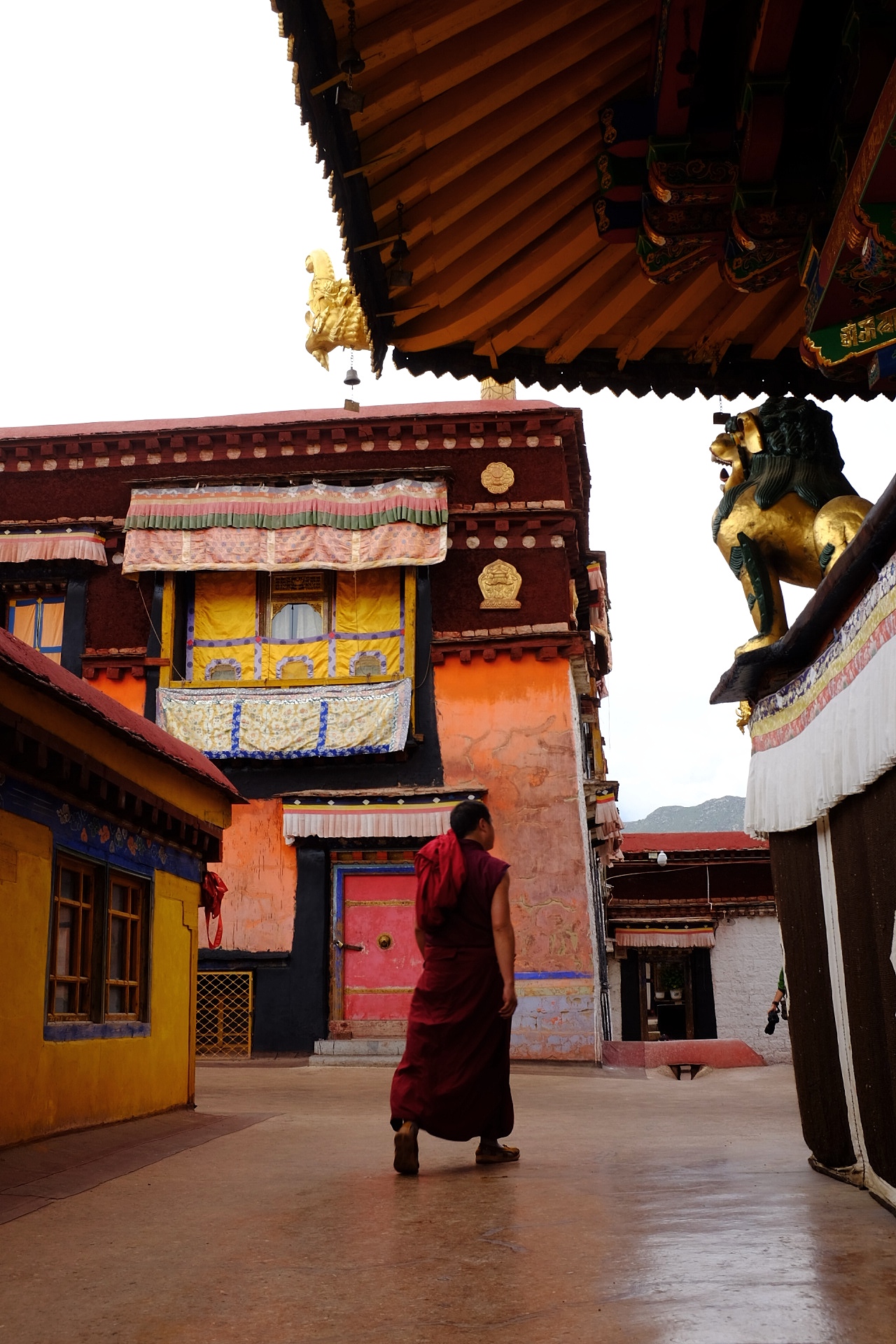
Below the monk's room on the second floor is the inner prayer path of the Jokhang Temple. This is the most sacred prayer path in the entire Tibetan area and is closed for maintenance.
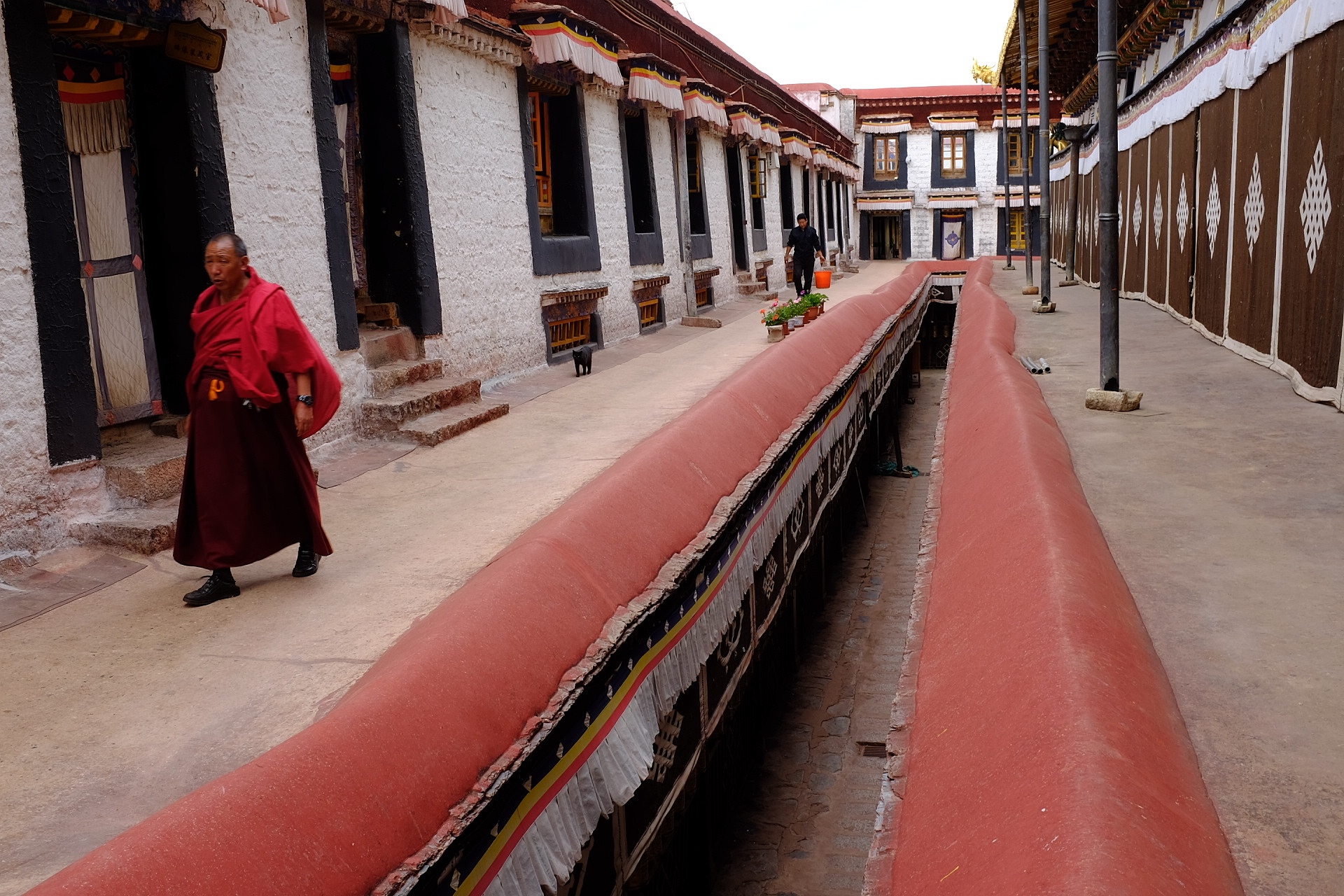
My daughter became interested in the cats in the Jokhang Temple! It’s also strange that the Jokhang Temple is different from other temples in that there are only cats and no dogs.
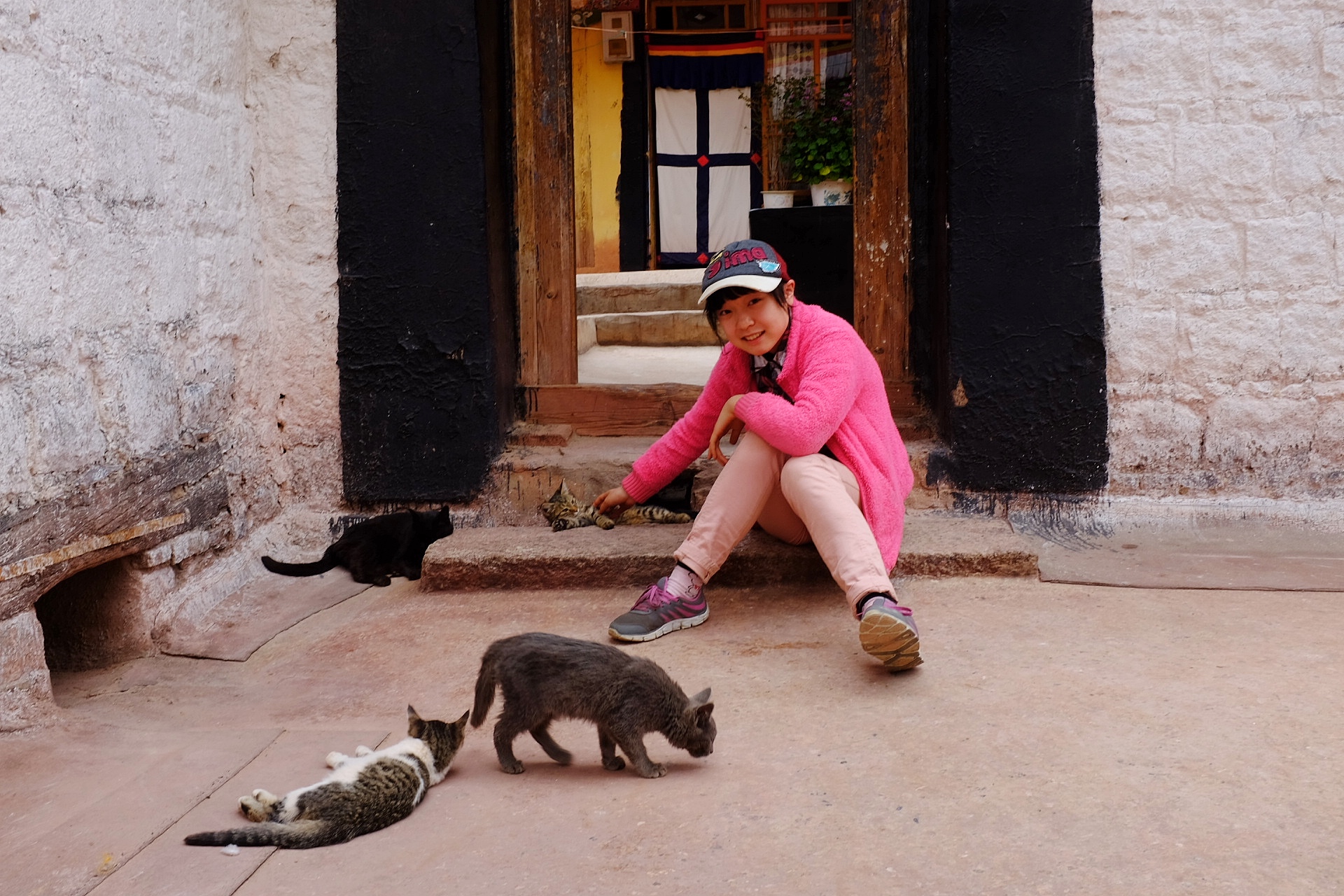
The cat seems to like my camera.
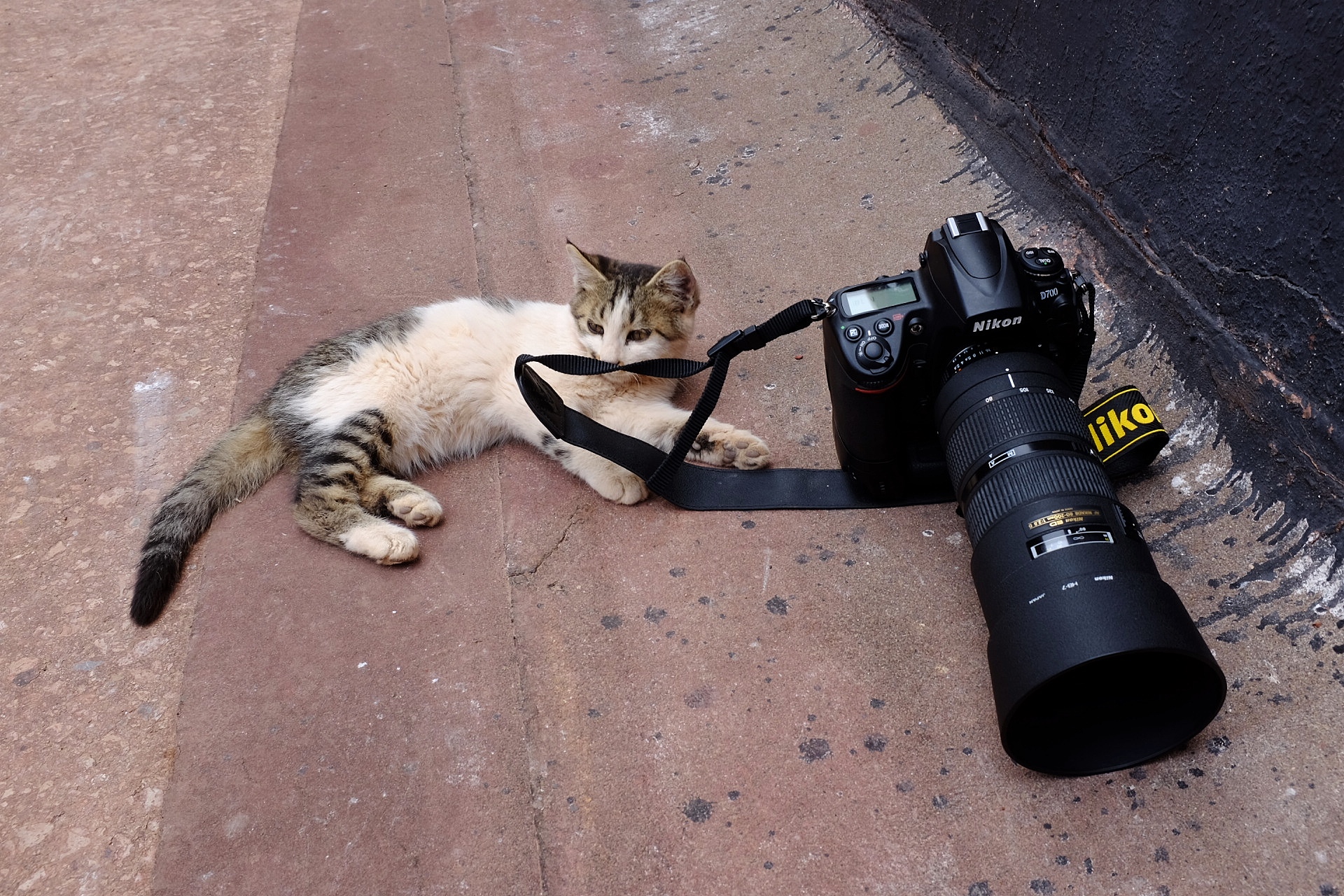
This time when I came to Tibet, I rarely saw tourists who wrapped themselves in scarves like terrorists, which is great.
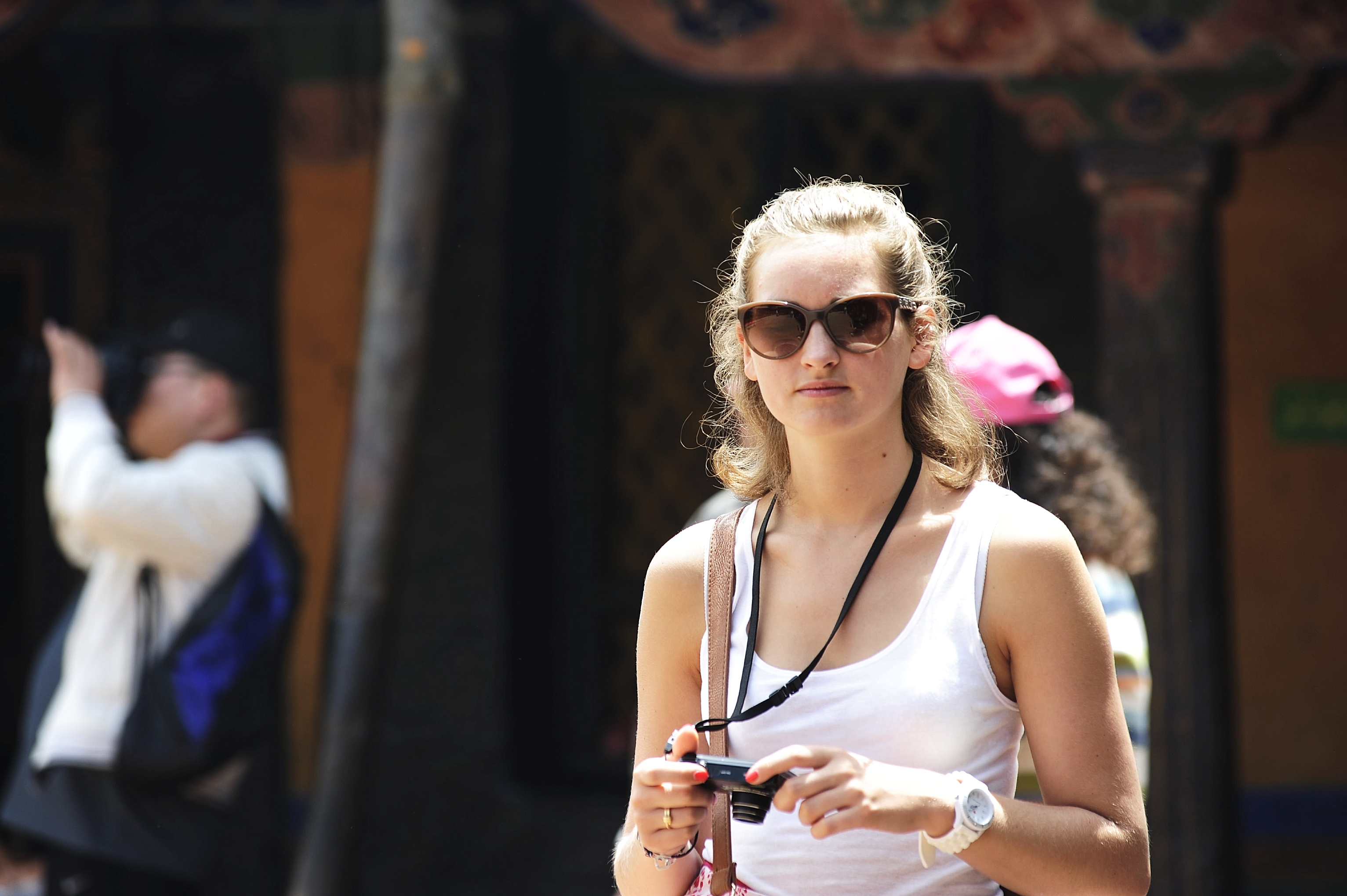
I also moved the colors from the prayer flags to my head, which is both beautiful and meaningful!
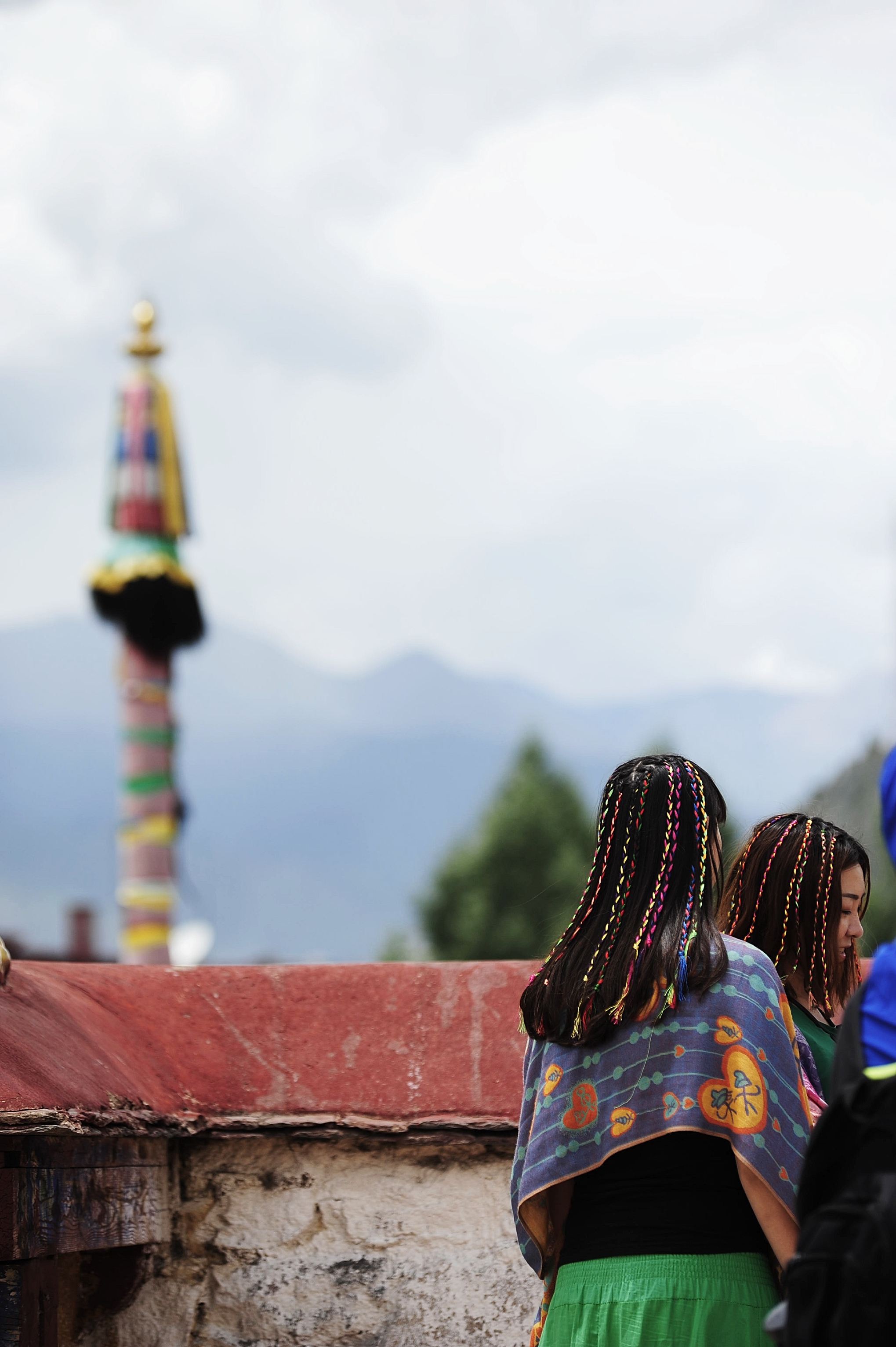
I was a little tired after wandering around the Jokhang Temple for two hours, so I went out to Canggu Temple to drink sweet tea. The alleys around the Jokhang Temple were very flavorful and I liked it.
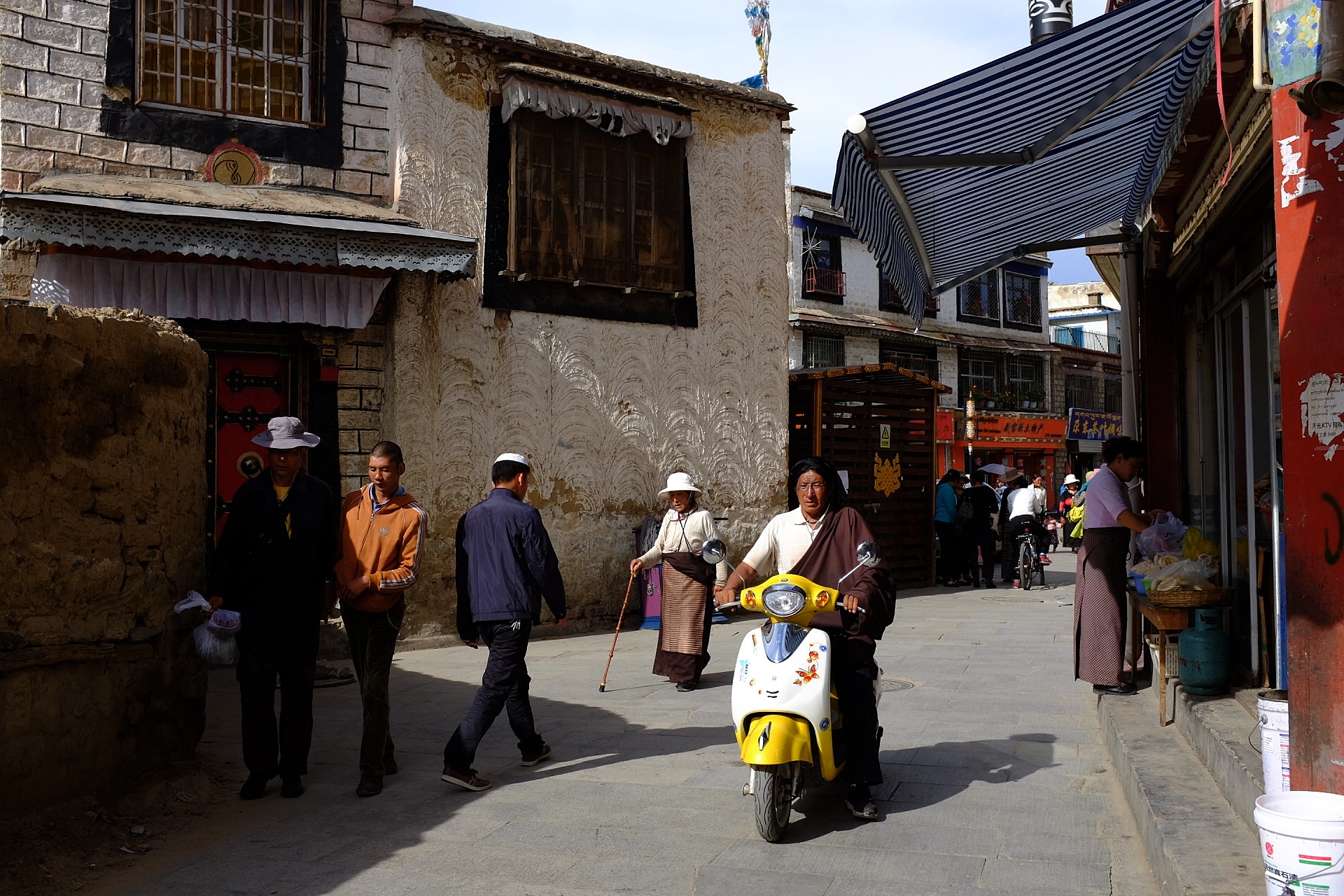
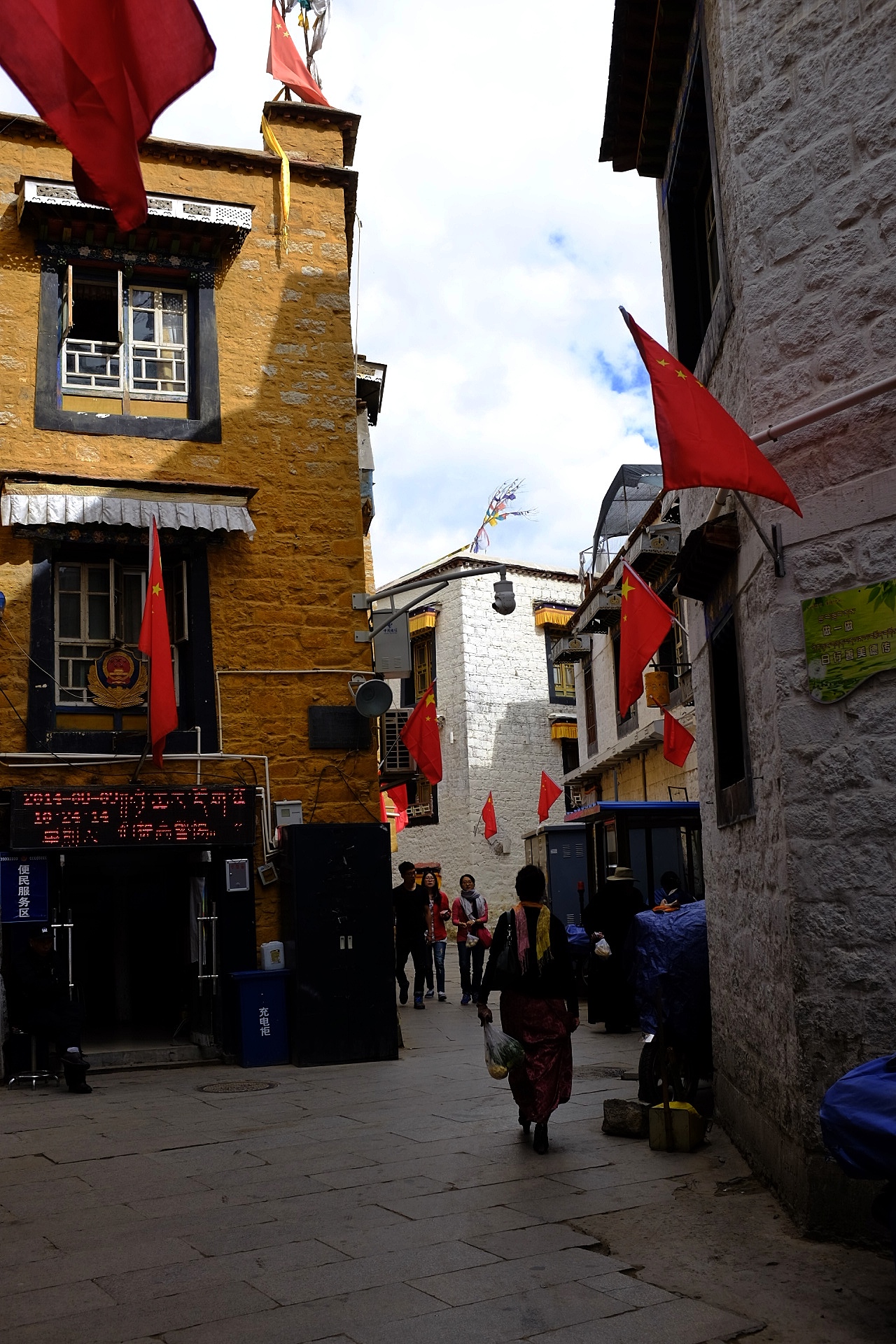
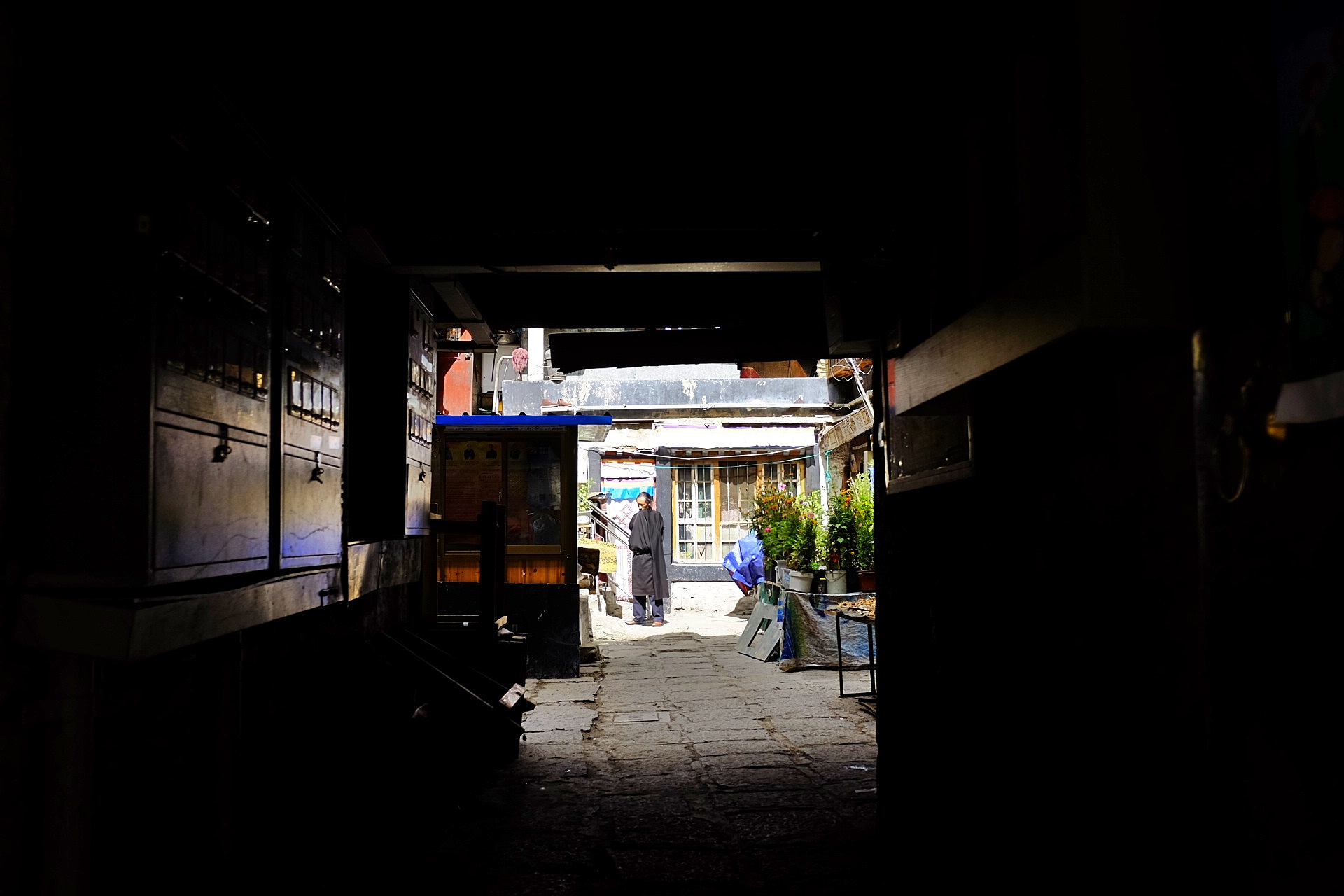
Just take photos at the Tibetan Noodles Workshop and the girl will give you a smile.
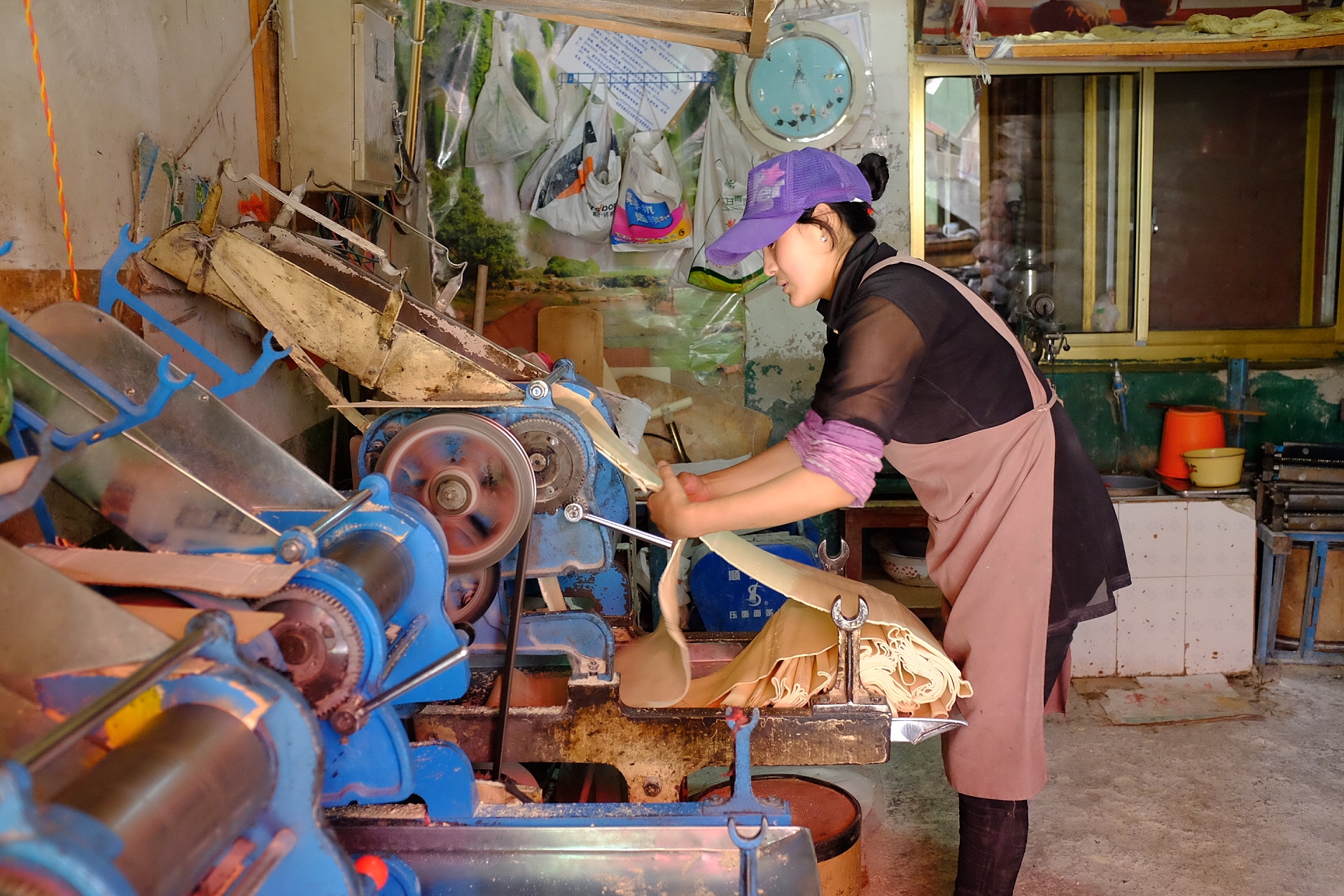
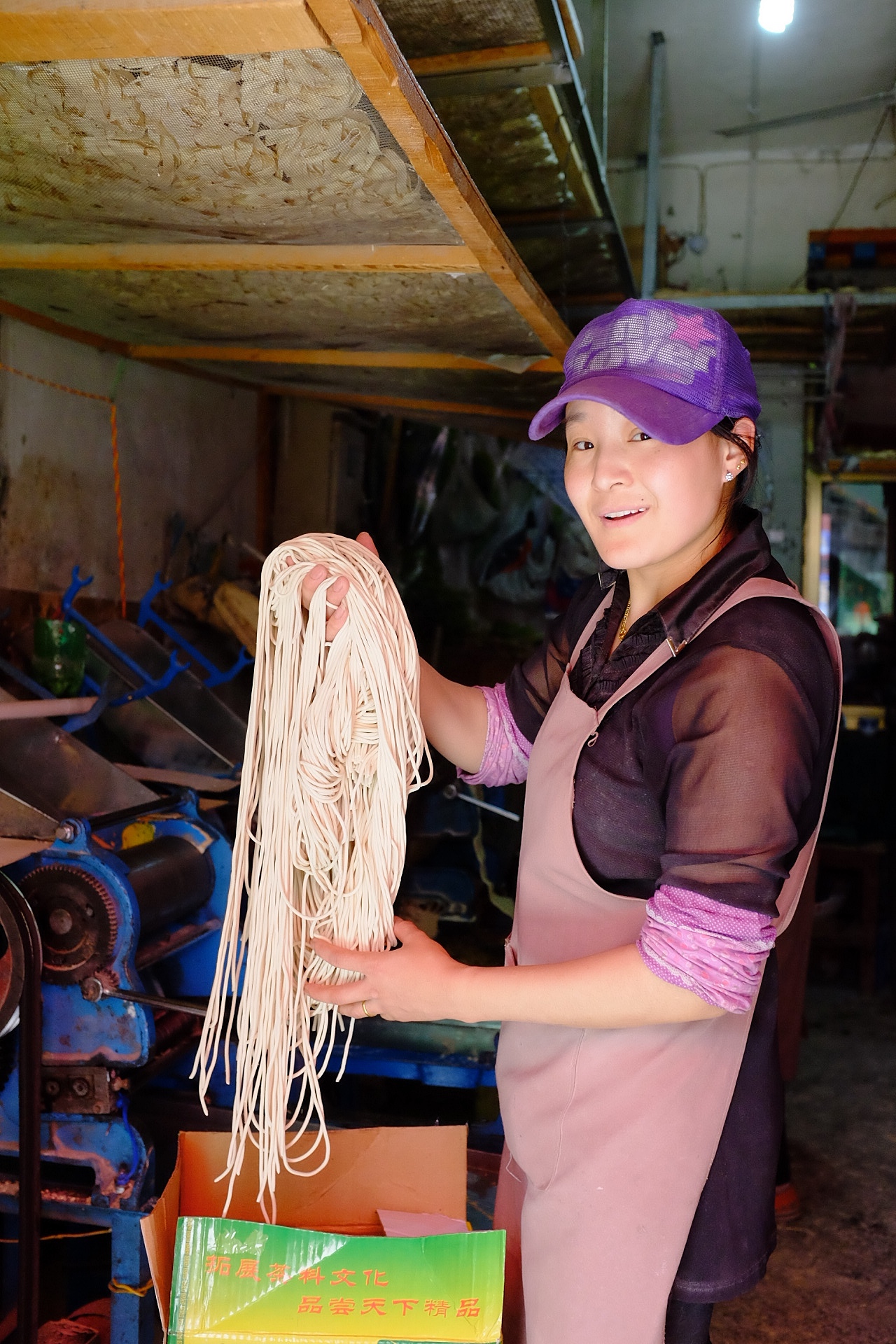
The stall selling yak meat is different. Judging from the body language, it’s better not to take pictures.
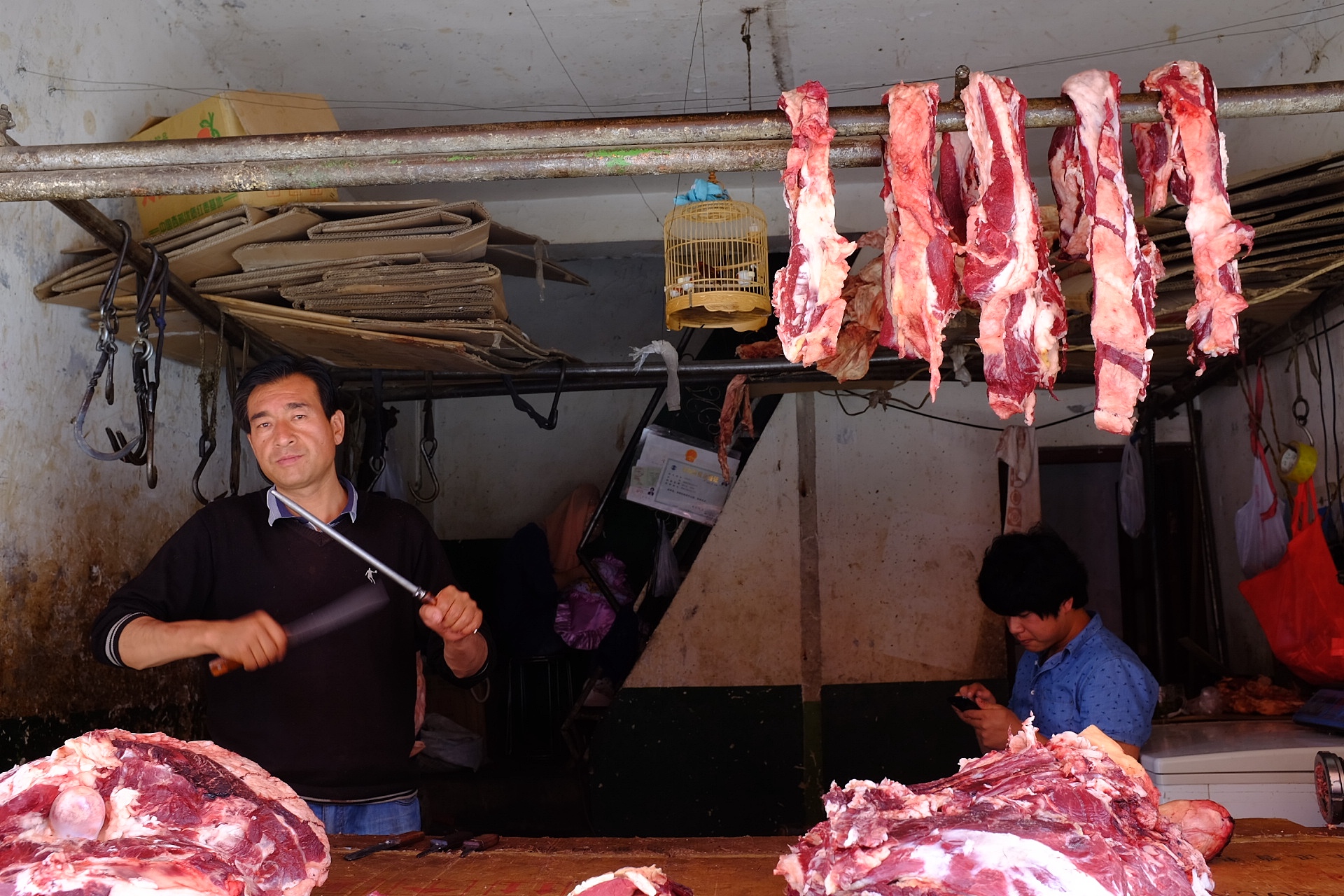
This is a Muslim residential area next to the Jokhang Temple. It feels like you have arrived in the northwest, and you feel like you are traveling through time.
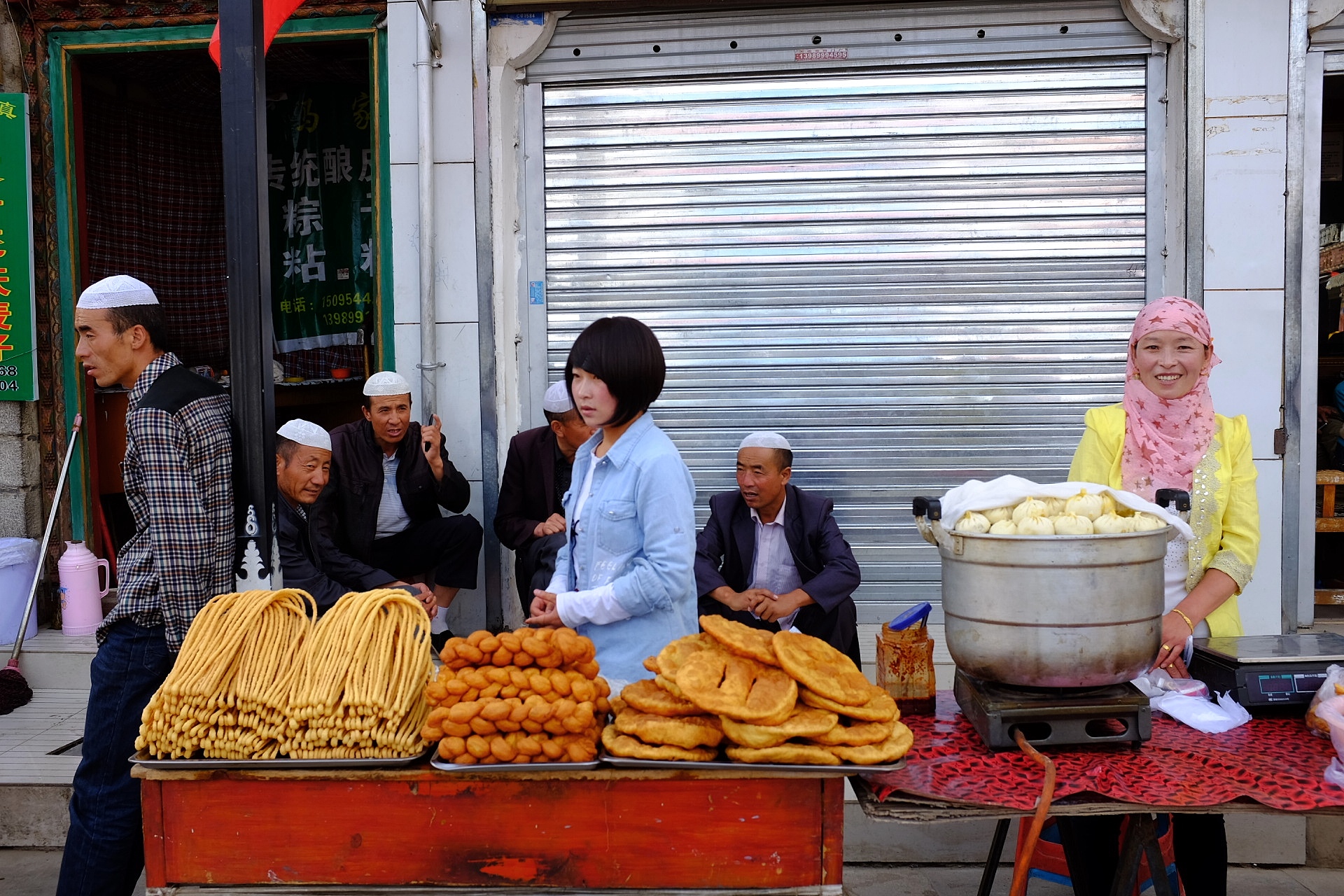
The bulletin board at the Alley Inn in the alley is very interesting! My daughter was very interested and said she would stay here again in the future. I said I wanted to live here too, and she rolled her eyes at me and said, "Uncle, you're too old!"
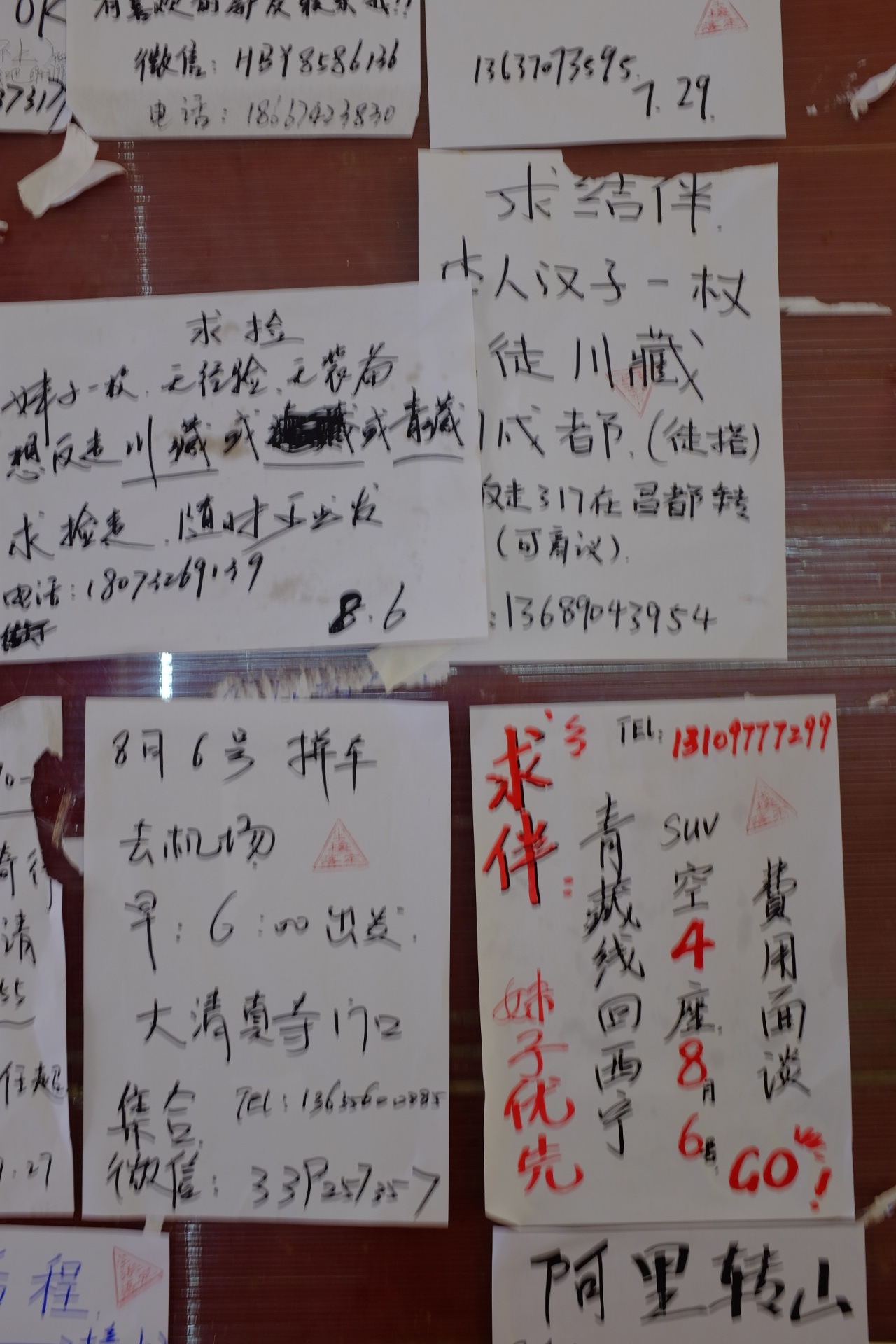
Canggu Temple Sweet Teahouse is located inside Canggu Temple and is very famous among travel enthusiasts. It is very quiet here and not as noisy as Guangming Port Qiongtian Teahouse. The sweet tea here has a richer taste. Many travel enthusiasts and herdsmen like it here.
Canggu Temple is the only nun temple in Lhasa and enjoys a high reputation in the Tibetan Buddhist community. Before liberation, many nobles sent their daughters to Canggonggu Temple to practice in order to avoid the high dowry paid when marrying off their daughters. The novel by Tibetan female writer Qu Zhen In "The Genderless God", the heroine YangzhenDolma is the unfortunate woman who suffered this fate. Unlike other Arnies who were born in poverty and had to seek alms everywhere, these aristocratic ladies lived in small buildings built by their fathers and brothers. Not only were they exempted from the pain of hard labor, but they were even served by servants. The practice of Qingdeng Ancient Buddha cannot suppress the pursuit of love. Many noble ani have private contacts with their lovers, and even bring them to the temple for private meetings. There is a ballad in Tibet, which is said to sum up the characteristics of the four Ani temples in Lhasa: "The nuns of Miqinre Temple practice on the top of the cliff; the nuns of Gali Temple graze in the deep valleys; the nuns of Langgu Temple live in the mountains. Drinking in the Buddhist hall; only the nuns in Canggu Temple practice Buddhism and live a secular life."
Canggu Temple Sweet Tea House not only prohibits smoking, but also prohibits taking pictures. I hung the X100S on my chest and took a few blind photos. Those hot water bottles are filled with Tibetan sweet tea. A 3-pound pot of sweet tea costs 6 yuan. The Tibetan buns with yak meat and vegetables are also very good.
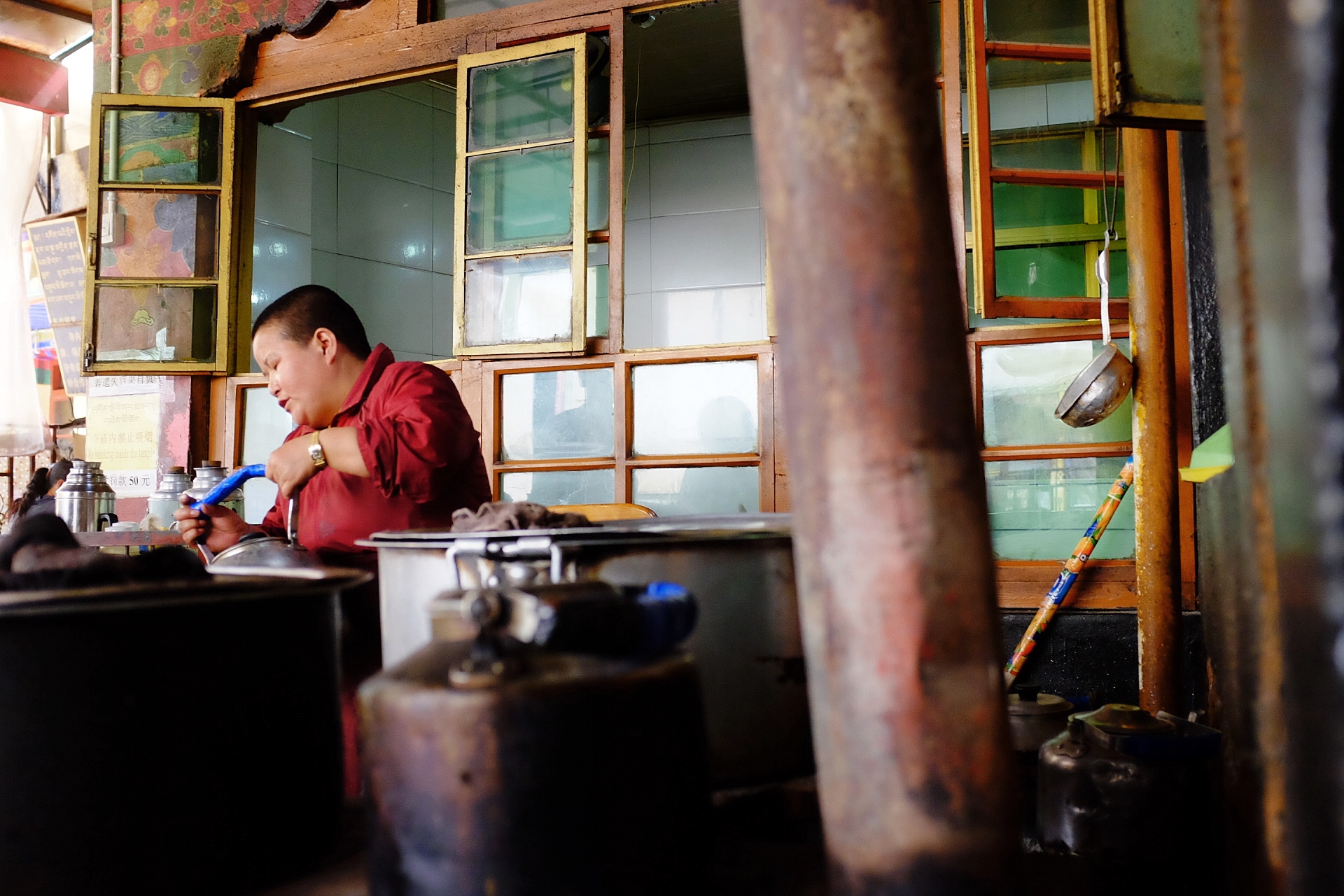
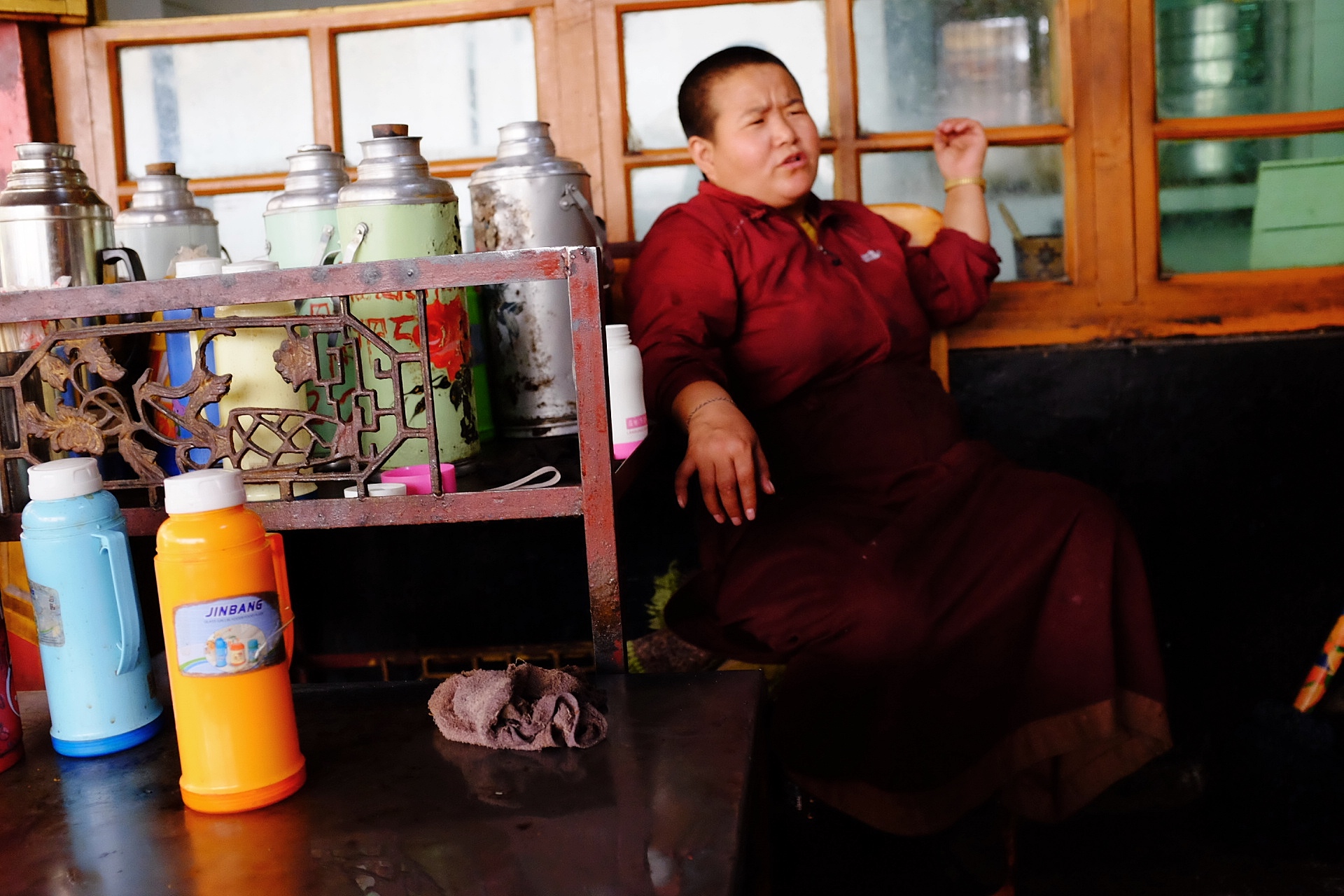
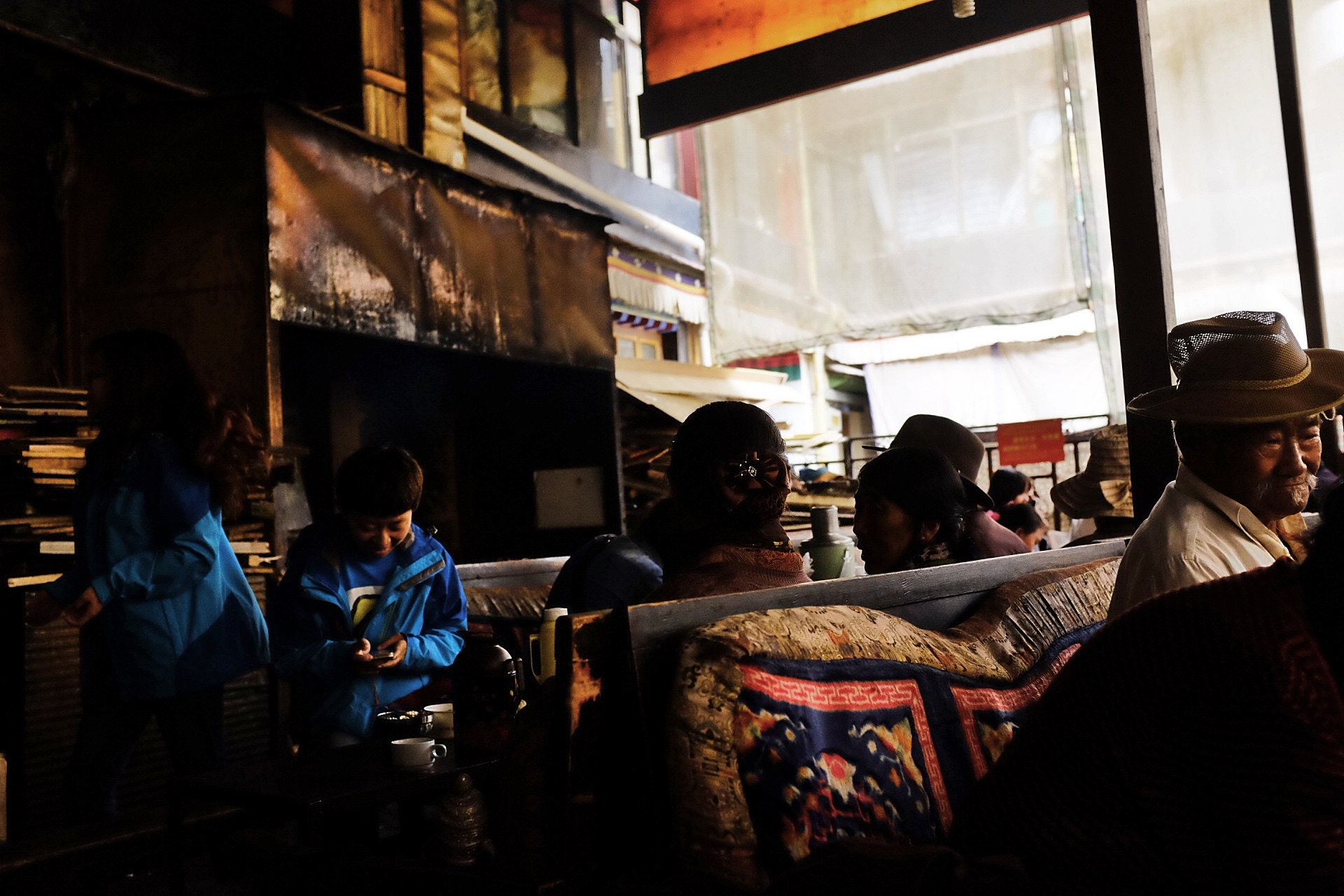
After drinking sweet tea at Canggu Temple, we returned to the hotel to rest. Tomorrow we will go to the last stop of this journey, driving more than 260 kilometers along G109, crossing the Naragan Pass at an altitude of 5120 meters, and heading to the holy lake Namtso.
